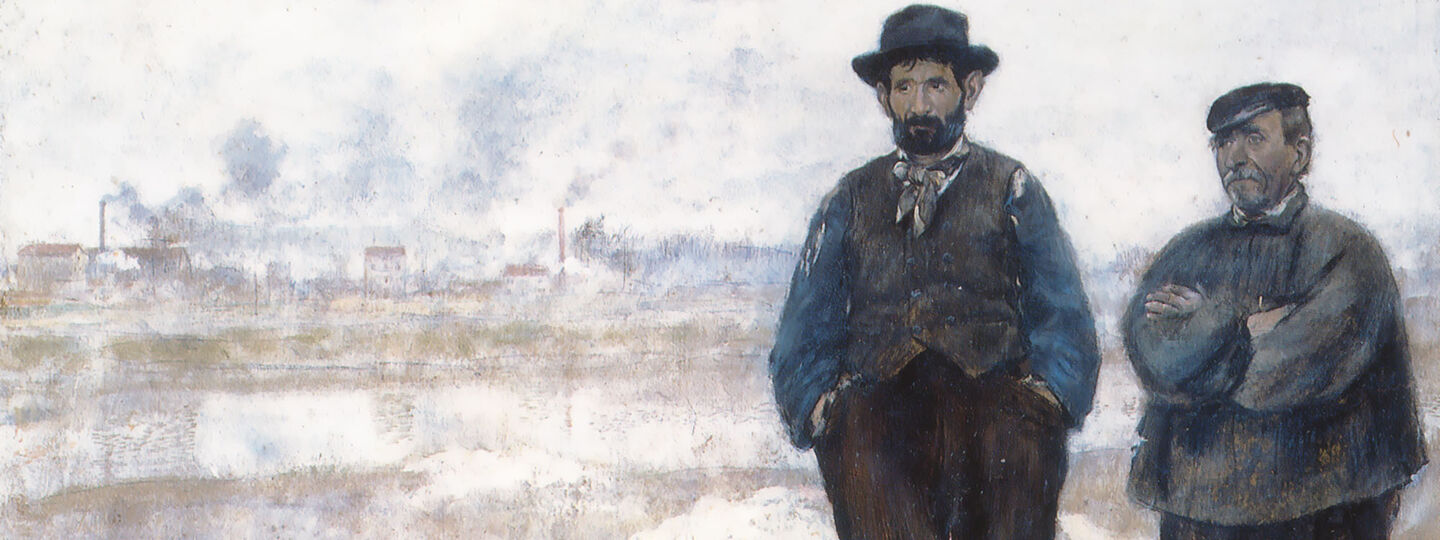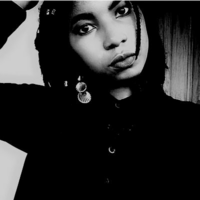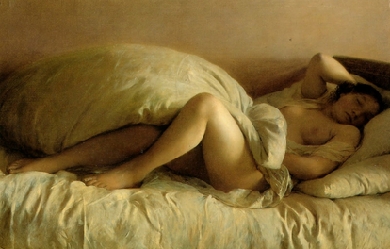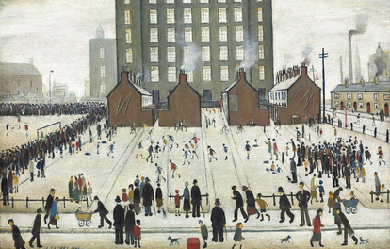
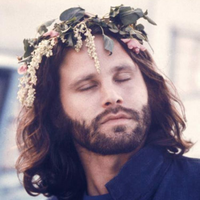
James Douglas “Jim” Morrison (December 8, 1943– July 3, 1971) was an American singer, songwriter, and poet, best remembered as the lead singer of The Doors. As a result of his lyrics, wild personality, performances, and the dramatic circumstances surrounding his life and death, Morrison is regarded by critics and fans as one of the most iconic and influential frontmen in rock music history. In the later part of the 20th century, his fame endured as one of the popular culture’s most rebellious and oft-displayed icons, representing the generation gap and youth counterculture. He was also well known for improvising spoken word poetry passages while the band played live. Morrison was ranked number 47 on Rolling Stone’s list of the "100 Greatest Singers of All Time", and number 22 on Classic Rock magazine’s "50 Greatest Singers In Rock". Ray Manzarek, who co-founded the Doors with him, said Morrison “embodied hippie counterculture rebellion”. Morrison was sometimes referred to by other nicknames, such as “Lizard King” and “King of Orgasmic Rock”. Morrison developed an alcohol dependency during the 1960s, which at times affected his performances on stage. He died at the age of 27 in Paris, possibly from an accidental heroin overdose. As no autopsy was performed, the exact cause of Morrison’s death is still disputed. Morrison is interred at Père Lachaise Cemetery in eastern Paris. Early years James Douglas Morrison was born in Melbourne, Florida, the son of Clara Virginia (née Clarke) and Rear Admiral George Stephen Morrison, USN, who commanded US naval forces during the Gulf of Tonkin incident, which provided the pretext for the US invasion of South Vietnam in 1965. Morrison had a sister, Anne Robin, who was born in 1947 in Albuquerque, New Mexico; and a brother, Andrew Lee Morrison, who was born in 1948 in Los Altos, California. His ancestors were Scottish, Irish, and English. In 1947, Morrison, then four years old, allegedly witnessed a car accident in the desert, in which a family of Native Americans were injured and possibly killed. He referred to this incident in the Doors’ song “Peace Frog” on the 1970 album Morrison Hotel, as well as in the spoken word performances “Dawn’s Highway” and “Ghost Song” on the posthumous 1978 album An American Prayer. Morrison believed this incident to be the most formative event of his life, and made repeated references to it in the imagery in his songs, poems, and interviews. His family does not recall this incident happening in the way he told it. According to the Morrison biography No One Here Gets Out Alive, Morrison’s family did drive past a car accident on an Indian reservation when he was a child, and he was very upset by it. The book The Doors, written by the remaining members of the Doors, explains how different Morrison’s account of the incident was from that of his father. This book quotes his father as saying, "We went by several Indians. It did make an impression on him [the young James]. He always thought about that crying Indian." This is contrasted sharply with Morrison’s tale of “Indians scattered all over the highway, bleeding to death.” In the same book, his sister is quoted as saying, “He enjoyed telling that story and exaggerating it. He said he saw a dead Indian by the side of the road, and I don’t even know if that’s true.” Raised a military brat, Morrison’s family moved often. He spent part of his childhood in San Diego. He completed third grade at a Fairfax County Elementary School Fairfax County, Virginia. His father was stationed at NAS Kingsville in 1952, he attended Charles H. Flato Elementary School in Kingsville, Texas. He continued at St. John’s Methodist School in Albuquerque, New Mexico, and then Longfellow School Sixth Grade Graduation Program from San Diego, California. In 1957, Morrison attended Alameda High School in Alameda, California. He graduated from George Washington High School, now George Washington Middle School, in Alexandria, Virginia in June 1961. Cass Elliot also attended high school there, that same year. Morrison read widely and voraciously—being particularly inspired by the writings of philosophers and poets. He was influenced by Friedrich Nietzsche, whose views on aesthetics, morality, and the Apollonian and Dionysian duality would appear in his conversation, poetry and songs. He read Plutarch’s “Lives of the Noble Greeks and Romans”. He read the works of the French Symbolist poet Arthur Rimbaud, whose style would later influence the form of Morrison’s short prose poems. He was also influenced by William S. Burroughs, Jack Kerouac, Allen Ginsberg, Lawrence Ferlinghetti, Charles Baudelaire, Molière, Franz Kafka, Honoré de Balzac and Jean Cocteau, along with most of the French existentialist philosophers. His senior-year English teacher said, “Jim read as much and probably more than any student in class, but everything he read was so offbeat I had another teacher (who was going to the Library of Congress) check to see if the books Jim was reporting on actually existed. I suspected he was making them up, as they were English books on sixteenth– and seventeenth-century demonology. I’d never heard of them, but they existed, and I’m convinced from the paper he wrote that he read them, and the Library of Congress would’ve been the only source.” Morrison went to live with his paternal grandparents in Clearwater, Florida, where he attended classes at St. Petersburg College (then known as a junior college). In 1962, he transferred to Florida State University (FSU) in Tallahassee, where he appeared in a school recruitment film. While attending FSU, Morrison was arrested for a prank following a home football game. In January 1964, Morrison moved to Los Angeles to attend the University of California, Los Angeles (UCLA). Shortly thereafter on August 2, 1964, Morrison’s father, George Stephen Morrison, commanded a carrier division of the United States fleet during the Gulf of Tonkin Incident, which resulted in the United States’ rapid escalation of the Vietnam War. At UCLA, Morrison enrolled in Jack Hirschman’s class on Antonin Artaud in the Comparative Literature program within the UCLA English Department. Artaud’s brand of surrealist theatre had a profound impact on Morrison’s dark poetic sensibility of cinematic theatricality. Morrison completed his undergraduate degree at UCLA’s film school within the Theater Arts department of the College of Fine Arts in 1965. At the time of graduation ceremony, he went to Venice, and his diploma was mailed to his mother at Coronado. He made several short films while attending UCLA. First Love, the first of these films, made with Morrison’s classmate and roommate Max Schwartz, was released to the public when it appeared in a documentary about the film Obscura. During these years, while living in Venice Beach, he became friends with writers at the Los Angeles Free Press, for which he advocated until his death in 1971. He conducted a lengthy and in-depth interview with Bob Chorush and Andy Kent, both working for the Free Press at the time (approximately December 6–8, 1970), and was planning on visiting the headquarters of the busy newspaper shortly before leaving for Paris. The Doors In the summer of 1965, after graduating with a bachelor’s degree from the UCLA film school, Morrison led a bohemian lifestyle in Venice Beach. Living on the rooftop of a building inhabited by his old UCLA cinematography friend, Dennis Jakobs, he wrote the lyrics of many of the early songs the Doors would later perform live and record on albums, the most notable being “Moonlight Drive” and “Hello, I Love You”. According to Jakobs, he lived on canned beans and LSD for several months. Morrison and fellow UCLA student, Ray Manzarek, were the first two members of the Doors, forming the group during that summer. They had met months earlier as cinematography students. The now-legendary story claims that Manzarek was lying on the beach at Venice one day, where he accidentally encountered Morrison. He was impressed with Morrison’s poetic lyrics, claiming that they were “rock group” material. Subsequently, guitarist Robby Krieger and drummer John Densmore joined. Krieger auditioned at Densmore’s recommendation and was then added to the lineup. All three musicians shared a common interest in the Maharishi Mahesh Yogi’s meditation practices at the time, attending scheduled classes, but Morrison was not involved in this series of classes, claiming later that he “did not meditate.” The Doors took their name from the title of Aldous Huxley’s book The Doors of Perception (a reference to the unlocking of doors of perception through psychedelic drug use). Huxley’s own title was a quotation from William Blake’s The Marriage of Heaven and Hell, in which Blake wrote: “If the doors of perception were cleansed everything would appear to man as it is, infinite.” Although Morrison was known as the lyricist of the group, Krieger also made significant lyrical contributions, writing or co-writing some of the group’s biggest hits, including “Light My Fire”, “Love Me Two Times”, “Love Her Madly”, and “Touch Me”. On the other hand, Morrison, who didn’t write most songs using an instrument, would come up with vocal melodies for his own lyrics, with the other band members contributing chords and rhythm. Morrison did not play an instrument live (except for maracas and tambourine for most shows, and harmonica on a few occasions) or in the studio (excluding maracas, tambourine, handclaps, and whistling). However, he did play the grand piano on “Orange County Suite” and a Moog synthesizer on “Strange Days”. In June 1966, Morrison and the Doors were the opening act at the Whisky a Go Go in the last week of the residency of Van Morrison’s band Them. Van’s influence on Jim’s developing stage performance was later noted by John Densmore in his book Riders On The Storm: “Jim Morrison learned quickly from his near-namesake’s stagecraft, his apparent recklessness, his air of subdued menace, the way he would improvise poetry to a rock beat, even his habit of crouching down by the bass drum during instrumental breaks.” On the final night, the two Morrisons and their two bands jammed together on “Gloria”. In November 1966, Morrison and the Doors produced a promotional film for “Break on Through (To the Other Side)”, which was their first single release. The film featured the four members of the group playing the song on a darkened set with alternating views and close-ups of the performers while Morrison lip-synched the lyrics. Morrison and the Doors continued to make short music films, including “The Unknown Soldier”, “Moonlight Drive”, and “People Are Strange”. The Doors achieved national recognition after signing with Elektra Records in 1967. The single “Light My Fire” spent three weeks at number one on the Billboard Hot 100 chart in July/August 1967. This was a far cry from the Doors playing warm up for Simon and Garfunkel and playing at a high school as they did in Connecticut that same year. Later, the Doors appeared on The Ed Sullivan Show, a popular Sunday night variety series that had introduced the Beatles and Elvis Presley to the United States. Ed Sullivan requested two songs from the Doors for the show, “People Are Strange” and “Light My Fire”. Sullivan’s censors insisted that the Doors change the lyrics of the song “Light My Fire” from “Girl we couldn’t get much higher” to “Girl we couldn’t get much better” for the television viewers; this was reportedly due to what was perceived as a reference to drugs in the original lyrics. After giving assurances of compliance to the producer in the dressing room, the band agreed, “we’re not changing a word,” and proceeded to sing the song with the original lyrics. Sullivan was not happy and he refused to shake hands with Morrison or any other band member after their performance. Sullivan had a show producer tell the band that they would never appear on The Ed Sullivan Show again. Morrison reportedly said to the producer, in a defiant tone, “Hey man. We just 'did’ the Sullivan Show!” By the release of their second album, Strange Days, the Doors had become one of the most popular rock bands in the United States. Their blend of blues and dark psychedelic rock included a number of original songs and distinctive cover versions, such as their rendition of “Alabama Song”, from Bertolt Brecht and Kurt Weill’s opera, Rise and Fall of the City of Mahagonny. The band also performed a number of extended concept works, including the songs “The End”, “When the Music’s Over”, and “Celebration of the Lizard”. In 1966, photographer Joel Brodsky took a series of black-and-white photos of Morrison, in a photo shoot known as “The Young Lion” photo session. These photographs are considered among the most iconic images of Jim Morrison and are frequently used as covers for compilation albums, books, and other memorabilia of the Doors and Morrison. In late 1967 at an infamous concert in New Haven, Connecticut, he was arrested on stage, an incident that further added to his mystique and emphasized his rebellious image. In 1968, the Doors released their third studio album, Waiting for the Sun. The band performed on July 5 at the Hollywood Bowl, this performance became famous with the DVD: Live at the Hollywood Bowl. It’s also this year that the band played, for the first time, in Europe. Their fourth album, The Soft Parade, was released in 1969. It was the first album where the individual band members were given credit on the inner sleeve for the songs they had written. Previously, each song on their albums had been credited simply to “the Doors”. On September 6 and 7, 1968, the Doors played four performances at the Roundhouse, London, England with Jefferson Airplane which were filmed by Granada for a television documentary The Doors are Open directed by John Sheppard. Around this time, Morrison—who had long been a heavy drinker—started showing up for recording sessions visibly inebriated. He was also frequently late for live performances. By early 1969, the formerly svelte singer had gained weight, grown a beard and mustache, and had begun dressing more casually—abandoning the leather pants and concho belts for slacks, jeans and T-shirts. During a concert of March 1, 1969 at the Dinner Key Auditorium in Miami, Morrison attempted to spark a riot in the audience. He failed, but a warrant for his arrest was issued by the Dade County Police department three days later for indecent exposure. Consequently, many of the Doors’ scheduled concerts were canceled. In September 1970, Morrison was convicted of indecent exposure and profanity. Morrison, who attended the sentencing “in a wool jacket adorned with Indian designs”, silently listened as he was sentenced for six months in prison and had to pay a $500 fine. Morrison remained free on a $50,000 bond. At the sentencing, Judge Murray Goodman told Morrison that he was a “person graced with a talent” admired by many of his peers. In 2007 Florida Governor Charlie Crist suggested the possibility of a posthumous pardon for Morrison, which was announced as successful on December 9, 2010. Drummer John Densmore denied Morrison ever exposed himself on stage that night. Following The Soft Parade, the Doors released Morrison Hotel. After a lengthy break the group reconvened in October 1970 to record what would become their final album with Morrison, titled L.A. Woman. Shortly after the recording sessions for the album began, producer Paul A. Rothchild—who had overseen all of their previous recordings—left the project. Engineer Bruce Botnick took over as producer. Poetry and film Morrison began writing in earnest during his adolescence. At UCLA he studied the related fields of theater, film, and cinematography. He self-published two separate volumes of his poetry in 1969, titled The Lords / Notes on Vision and The New Creatures. The Lords consists primarily of brief descriptions of places, people, events and Morrison’s thoughts on cinema. The New Creatures verses are more poetic in structure, feel and appearance. These two books were later combined into a single volume titled The Lords and The New Creatures. These were the only writings published during Morrison’s lifetime. Morrison befriended Beat poet Michael McClure, who wrote the afterword for Danny Sugerman’s biography of Morrison, No One Here Gets Out Alive. McClure and Morrison reportedly collaborated on a number of unmade film projects, including a film version of McClure’s infamous play The Beard, in which Morrison would have played Billy the Kid. After his death, a further two volumes of Morrison’s poetry were published. The contents of the books were selected and arranged by Morrison’s friend, photographer Frank Lisciandro, and girlfriend Pamela Courson’s parents, who owned the rights to his poetry. The Lost Writings of Jim Morrison Volume I is titled Wilderness, and, upon its release in 1988, became an instant New York Times Bestseller. Volume II, The American Night, released in 1990, was also a success. Morrison recorded his own poetry in a professional sound studio on two separate occasions. The first was in March 1969 in Los Angeles and the second was on December 8, 1970. The latter recording session was attended by Morrison’s personal friends and included a variety of sketch pieces. Some of the segments from the 1969 session were issued on the bootleg album The Lost Paris Tapes and were later used as part of the Doors’ An American Prayer album, released in 1978. The album reached No. 54 on the music charts. Some poetry recorded from the December 1970 session remains unreleased to this day and is in the possession of the Courson family. Morrison’s best-known but seldom seen cinematic endeavor is HWY: An American Pastoral, a project he started in 1969. Morrison financed the venture and formed his own production company in order to maintain complete control of the project. Paul Ferrara, Frank Lisciandro and Babe Hill assisted with the project. Morrison played the main character, a hitchhiker turned killer/car thief. Morrison asked his friend, composer/pianist Fred Myrow, to select the soundtrack for the film. Personal life Morrison’s family Morrison’s early life was the semi-nomadic existence typical of military families. Jerry Hopkins recorded Morrison’s brother, Andy, explaining that his parents had determined never to use physical corporal punishment such as spanking on their children. They instead instilled discipline and levied punishment by the military tradition known as dressing down. This consisted of yelling at and berating the children until they were reduced to tears and acknowledged their failings. Once Morrison graduated from UCLA, he broke off most contact with his family. By the time Morrison’s music ascended to the top of the charts (in 1967) he had not been in communication with his family for more than a year and falsely claimed that his parents and siblings were dead (or claiming, as it has been widely misreported, that he was an only child). This misinformation was published as part of the materials distributed with the Doors’ self-titled debut album. Admiral Morrison was not supportive of his son’s career choice in music. One day, an acquaintance brought over a record thought to have Jim on the cover. The record was the Doors’ self-titled debut. The young man played the record for Morrison’s father and family. Upon hearing the record, Morrison’s father wrote him a letter telling him “to give up any idea of singing or any connection with a music group because of what I consider to be a complete lack of talent in this direction.” In a letter to the Florida Probation and Parole Commission District Office dated October 2, 1970, Morrison’s father acknowledged the breakdown in family communications as the result of an argument over his assessment of his son’s musical talents. He said he could not blame his son for being reluctant to initiate contact and that he was proud of him nonetheless. Morrison spoke fondly of his Irish and Scottish ancestry and was inspired by Celtic mythology in his poetry and songs. Celtic Family Magazine revealed in their 2016 Spring Issue his Morrison clan was originally from the Isle of Lewis, Scotland, while his Irish side, the Clelland clan whom married into the Morrison line were from County Down, Ireland. Relationships Morrison’s first major love affair was with Mary Werbelow, whom he met on the beach in Florida. The relationship lasted several years inspiring many of the songs on the first two Doors albums including the 11-minute ballad “The End” which Ray Manzarek said was originally “a short goodbye love song to Mary” calling her “Jim’s first love”. Werbelow has remained out of view to rock historians with one exception, a 2005 interview in the St. Petersburg Times where she said Morrison spoke to her before a photo shoot for the Doors’ fourth album and told her the first three albums were about her. Morrison spent nearly the entirety of his adult life with a woman named Pamela Courson after meeting while both attended university. They met before he gained fame or fortune and she encouraged him to develop his poetry. At times, Courson used the surname “Morrison” with his apparent consent, or at least lack of concern. She was buried as Pamela Susan Morrison. After Courson’s death in 1974, and after her parents petitioned the court for inheritance of Morrison’s estate, the probate court in California decided that she and Morrison had once had what qualified as a common-law marriage, despite neither having applied for such status while they were living and common-law marriage not being recognized in California. Morrison’s will lists him as “an unmarried person” but listed Courson as the sole heir. They had previously obtained marriage licenses in Colorado in 1967 and in Los Angeles in 1968. The Doors’ keyboardist Ray Manzarek described Courson as Morrison’s “other half”. Morrison spoke to Courson through his lyrics and his poetry and dedicated his published poetry book The New Creatures to her. Songs like “Love Street”, “Queen of the Highway”, “Blue Sunday", and “Indian Summer” as well as many of his poems were said to be written about her. Morrison also reportedly regularly had sex with fans ("groupies") such as Pamela Des Barres and Josépha Karcz, who wrote a novel about their night together, and had numerous short flings with other musicians, as well as writers and photographers involved in the music business. They included Nico, the singer associated with the Velvet Underground, a one-night stand with singer Grace Slick of Jefferson Airplane, an on-again, off-again relationship with 16 Magazine’s Gloria Stavers as well as an alleged alcohol-fueled encounter with Janis Joplin. Nico also wanted to marry Morrison and they cut their thumbs in the desert with a knife and let their blood mingle. Nico said, “We exchanged blood. I carry his blood inside me.” David Crosby said many years later Morrison treated Joplin meanly at a party at the Calabasas, California, home of John Davidson while Davidson was out of town. She reportedly hit him over the head with a bottle of whiskey in retaliation during a fight in front of witnesses. In 1965, Judy Huddleston met Morrison and claimed she had a four-year on-and-off relationship with him that she chronicled in her book Love Him Madly: An Intimate Memoir of Jim Morrison and an out-of-print book called This is the End My Only Friend: Living & Dying with Jim Morrison, which was updated as Like He Was God. In 1970, Morrison participated in a Celtic Pagan handfasting ceremony with rock critic author Patricia Kennealy. The couple signed a document declaring themselves wed, but none of the necessary paperwork for a legal marriage was filed with the state. Kennealy discussed her experiences with Morrison in her autobiography Strange Days: My Life With and Without Jim Morrison. In an interview reported in the book Rock Wives, Kennealy reveals that she and Jim Morrison were wed, sort of, in a witch ceremony in 1970, but that he turned “really cold” when Kennealy became pregnant—maybe, she speculates, because he had "20 paternity suits pending against him." She was asked if Morrison took the ceremony seriously and she answered “probably not too seriously”. In July 1971, Janet Erwin documented in her journal having dated Morrison during the last few weeks before he traveled to Paris. She wrote the essay “Your Ballroom Days Are Over.” On a couple of their nights together there were strong aftershocks from the 1971 San Fernando earthquake; one aftershock measured 5.0 on the Richter magnitude scale. At the time of Morrison’s death there were at least three paternity actions pending against him, although no claims were made against his estate by any of the putative paternity claimants. One persistent claim of paternity came from Cliff Morrison. Pamela Des Barres later said in her autobiography I’m With The Band: Confessions of a Groupie that Morrison “turned out to be very much a one-woman man”, referring to his relationship with Pamela Courson. Death Morrison joined Courson in Paris in March 1971, at an apartment he had rented on the rue Beautreillis (in the 4th arrondissement of Paris on the Right Bank). In letters he described going for long walks through the city, alone. During this time, Morrison shaved his beard and lost some of the weight he had gained in the previous months. Morrison died on July 3, 1971 at age 27. In the official account of his death, he was found in a Paris apartment bathtub (at 17–19 rue Beautreillis, 4th arrondissement) by Courson. The official cause of death was listed as “heart failure”, although no autopsy was performed. The absence of an autopsy left many questions regarding the cause of Morrison’s death. In Wonderland Avenue, Danny Sugerman discussed his encounter with Courson after she returned to the United States. According to Sugerman’s account, Courson stated that Morrison had died of an accidental heroin overdose, having snorted what he believed to be cocaine. Sugerman added that Courson had given numerous contradictory versions of Morrison’s death, saying at times that she had killed Morrison, or that his death was her fault. Courson’s story of Morrison’s unintentional ingestion of heroin, resulting in an accidental overdose, is supported by the confession of Alain Ronay, who has written that Morrison died of a hemorrhage after snorting Courson’s heroin, and that Courson nodded off instead of phoning for medical help, leaving Morrison alone and bleeding to death. Ronay confessed in an article in Paris that he then helped cover up the circumstances of Morrison’s death, and that there was no autopsy– the normal procedure when a young person dies suddenly– due to the medical examiner being bribed. In the epilogue of No One Here Gets Out Alive, Hopkins and Sugerman write that Ronay and Agnès Varda say Courson lied to the police who responded to the death scene, and later in her deposition, telling them Morrison never took drugs. She also claimed that she was Morrison’s cousin. In the epilogue to No One Here Gets Out Alive, Hopkins says that 20 years after Morrison’s death, Ronay and Varda broke their silence and gave this account “they arrived at the house shortly after Morrison’s death and Courson said that she and Morrison had taken heroin after a night of drinking. Morrison had been coughing badly, had gone to take a bath, and vomited blood.” Courson said that he appeared to recover and that she then went to sleep. When she awoke sometime later Morrison was unresponsive, so she called local friends. Hopkins and Sugerman also claim that Morrison had asthma and was suffering from a respiratory condition involving a chronic cough and vomiting blood on the night of his death. This theory is partially supported in The Doors (written by the remaining members of the band) in which they claim Morrison had been coughing up blood for nearly two months in Paris, but none of the members of the Doors were in Paris with Morrison in the months prior to his death. No other friends have reported witnessing Morrison coughing. According to a Madame Colinette, who was at Père Lachaise Cemetery mourning the recent loss of her husband, she witnessed Morrison’s funeral. The ceremony was “pitiful,” with several of the attendants muttering a few words, throwing a few flowers over the casket, then leaving quickly and hastily within minutes as if their lives depended upon it. Those who attended included Alain Ronay, Agnès Varda, Bill Siddons (manager), Courson, and Robin Wertle (Morrison’s Canadian private secretary at the time for a few months). In the first version of No One Here Gets Out Alive, published in 1980, Sugerman and Hopkins gave some credence to the rumor that Morrison may not have died at all, calling the fake death theory “not as far-fetched as it might seem”. This theory led to considerable distress for Morrison’s loved ones over the years, notably when fans would stalk them, searching for evidence of Morrison’s whereabouts. No proof of any kind has ever been offered to substantiate Sugerman’s suggestion that Morrison was still alive. In 1995, a new epilogue was added to Sugerman’s and Hopkins’s book, giving new facts about Morrison’s death and discounting the fake death theory saying “As time passed, some of Jim and Pamela [Courson]'s friends began to talk about what they knew, and although everything they said pointed irrefutably to Jim’s demise, there remained and probably always will be those who refuse to believe that Jim is dead and those who will not allow him to rest in peace.” In 2007, Sam Bernett, a former manager of the Rock 'n’ Roll Circus nightclub, released a (French) book titled “The End: Jim Morrison”, alleging that Morrison overdosed on heroin in his nightclub. He claims that Morrison went to the club to buy heroin for Courson, used some himself and died in the bathroom, and that his body was then moved by Patrick Chauvel, who corroborates the move, along with two unidentified drug dealers, nicknamed ‘Le Chinois’ and ‘Le Petit Robert’ out the back of the Nightclub so as to prevent a scandal and then bundled into a taxi with the two dealers, which then drove to Morrison’s rue Beautrellis apartment. Apart from Chauvel, one of the other patrons at the club who state that they helped move Morrison was interviewed in the documentary Rock Poet: Jim Morrison (2010). According to Bernett, the heroin was ultimately supplied by the aristocrat Jean de Breiteuil. In 2014, Marianne Faithfull claimed that her boyfriend, de Breiteuil, received a late-night phone call and he alone rushed over to Morrison’s apartment on the day of his death. Near the end of an 1986 audio interview, with radio host Roger Steffens and Doors drummer John Densmore. Steffens recounts that he had been told two days after Morrison’s death, by a shaking Marianne Faithfull and her lover Jean de Breiteuil in Marrakesh of the details of Morrison’s demise, with both Faithfull and Breiteuil having been in Morrison’s apartment after his return from the nightclub and seeing him dead in the bathroom, a scene which motivated them to quickly flee the country, flying to Tangier the next day and then on to Marrakesh, where Steffens happened to be living in 1971. Faithfull would consistently decline to comment on this thereafter until 2014. Steffens remarked that he found it amazing how Faithfull had never publicly discussed the tragedy from 1971 up to the time of recording, 1986. As early as the 1990s, Cameron Watson, an American working as a DJ in Paris at that time, would give the account that while working in the Parisian nightclub La Bulle in July 1971, two “well dressed” drug dealers arrived in the early morning hours at the club and told him that Jim Morrison had just died, Watson then announced this to the few remaining patrons at the club, the first public announcement of his demise and which contributed to the growth of the local parisian rumors. Paris Journal After his death, a notebook of poetry written by Morrison was recovered entitled Paris Journal which amongst other personal details, contains the allegorical foretelling of a man who will be left grieving and having to abandon his belongings, due to a police investigation into a death connected to the Chinese opium trade. Weeping, he left his pad on orders from police & furnishings hauled away, all records & momentos, & reporters calculating tears & curses for the press: “I hope the Chinese junkies get you” & they will for the [opium] poppy rules the world. The concluding stanzas of this poem end with conveying a disappointment for someone who he had an intimate relationship with and a further invocation of Billy/the killer Hitchhiker, a common character in Morrison’s body of work. This is my poem for you, Great flowing funky flower’d beast, Great perfumed wreck of hell... Someone new in your knickers & who would that be? You know, You know more, than you let on... Tell them you came & saw & look’d into my eyes & saw the shadow of the guard receding, Thoughts in time & out of season The Hitchiker stood by the side of the road & levelled his thumb in the calm calculus of reason. In 2013 another of Morrison’s notebooks from Paris, found alongside the Paris Journal in the same box, known as the 127 Fascination box, sold for $250,000. at auction. This box of personal belongings similarly contained a home movie of Pamela Courson, the only film so far recovered, to be shot by Morrison. The box also housed a number of older notebooks and journals and may have potentially included the “Steno Pad” and falsely titled “The Lost Paris Tapes” if they had not been separated from the primary collection and sold by Philippe Dalecky with this promotional title. This tape was later determined by avid listeners to be largely of Jomo & The Smoothies recordings of Morrison, friends and producer Paul Rothchild loose jamming in Los Angeles well before 1971. Grave site Morrison was buried in Père Lachaise Cemetery in Paris, one of the city’s most visited tourist attractions. The grave had no official marker until French officials placed a shield over it, which was stolen in 1973. The grave was listed in the cemetery directory with Morrison’s name incorrectly rearranged as “Douglas James Morrison.” In 1981, Croatian sculptor Mladen Mikulin voluntarily placed a bust of his own design and a new gravestone with Morrison’s name at the grave to commemorate the 10th anniversary of his death; the bust was defaced through the years by cemetery vandals and later stolen in 1988. Mikulin made another bust of Morrison in 1989, and a bronze portrait of him in 2001; neither piece is at the gravesite. In the early 1990s, Morrison’s father, George Stephen Morrison, after consulting with E. Nicholas Genovese, professor of classics and humanities, San Diego State University, placed a flat stone on the grave. The bronze plaque thereon bears the Greek inscription: ΚΑΤΑ ΤΟΝ ΔΑΙΜΟΝΑ ΕΑΥΤΟΥ, literally meaning “according to his own daemon, i.e., guiding spirit,” to convey the sentiment “True to Himself.” Artistic influences As a naval family the Morrisons relocated frequently. Consequently, Morrison’s early education was routinely disrupted as he moved from school to school. Nonetheless he was drawn to the study of literature, poetry, religion, philosophy and psychology, among other fields. Biographers have consistently pointed to a number of writers and philosophers who influenced Morrison’s thinking and, perhaps, his behavior. While still in his teens Morrison discovered the work of philosopher Friedrich Nietzsche. He was also drawn to the poetry of William Blake, Charles Baudelaire and Arthur Rimbaud. Beat Generation writers such as Jack Kerouac also had a strong influence on Morrison’s outlook and manner of expression; Morrison was eager to experience the life described in Kerouac’s On the Road. He was similarly drawn to the work of French writer Louis-Ferdinand Céline. Céline’s book, Voyage au Bout de la Nuit (Journey to the End of the Night) and Blake’s Auguries of Innocence both echo through one of Morrison’s early songs, “End of the Night”. Morrison later met and befriended Michael McClure, a well known beat poet. McClure had enjoyed Morrison’s lyrics but was even more impressed by his poetry and encouraged him to further develop his craft. Morrison’s vision of performance was colored by the works of 20th-century French playwright Antonin Artaud (author of Theater and its Double) and by Julian Beck’s Living Theater. Other works relating to religion, mysticism, ancient myth and symbolism were of lasting interest, particularly Joseph Campbell’s The Hero with a Thousand Faces. James Frazer’s The Golden Bough also became a source of inspiration and is reflected in the title and lyrics of the song “Not to Touch the Earth”. Morrison was particularly attracted to the myths and religions of Native American cultures. While he was still in school, his family moved to New Mexico where he got to see some of the places and artifacts important to the American Southwest Indigenous cultures. These interests appear to be the source of many references to creatures and places such as lizards, snakes, deserts and “ancient lakes” that appear in his songs and poetry. His interpretation and imagination of the practices of Native American ceremonial people (which, based on his readings, he referred to by the anthropological but inaccurate term “shamans”) influenced his stage routine, notably in seeking trance states and vision through dancing to the point of exhaustion. In particular, Morrison’s poem “The Ghost Song” was inspired by his readings about the Native American Ghost Dance. Jim Morrison’s vocal influences included Elvis Presley and Frank Sinatra, which is evident in his own baritone crooning style used in several of the Doors’ songs and in the 1981 documentary The Doors: A Tribute to Jim Morrison, producer Paul Rothchild refers his first impression of Morrison as being a “Rock and Roll Bing Crosby”. It is mentioned within the pages of No One Here Gets Out Alive by Danny Sugerman, that Morrison as a teenager was such a fan of Presley’s music that he demanded people be quiet when Elvis was on the radio. The Frank Sinatra influence is mentioned in the pages of The Doors, The Illustrated History also by Sugerman, where Frank Sinatra is listed on Morrison’s Band Bio as being his favorite singer. Reference to this can also be found in a Rolling Stone article about Jim Morrison, regarding the Top 100 rock singers of all time. Legacy Musical Morrison was, and continues to be, one of the most popular and influential singer-songwriters and iconic front men in rock history. To this day Morrison is widely regarded as the prototypical rock-star: surly, sexy, scandalous, and mysterious. The leather pants he was fond of wearing both onstage and off have since become stereotyped as rock-star apparel. In 2011, a Rolling Stone readers’ pick placed Jim Morrison in fifth place of the magazine’s “Best Lead Singers of All Time”. Iggy and the Stooges are said to have formed after lead singer Iggy Pop was inspired by Morrison while attending a Doors concert in Ann Arbor, Michigan. One of Pop’s most popular songs, “The Passenger”, is said to be based on one of Morrison’s poems. After Morrison’s death, Pop was considered as a replacement lead singer for the Doors; the surviving Doors gave him some of Morrison’s belongings and hired him as a vocalist for a series of shows. Wallace Fowlie, professor emeritus of French literature at Duke University, wrote Rimbaud and Jim Morrison, subtitled “The Rebel as Poet– A Memoir”. In this he recounts his surprise at receiving a fan letter from Morrison who, in 1968, thanked him for his latest translation of Arthur Rimbaud’s verse into English. “I don’t read French easily”, he wrote, “...your book travels around with me.” Fowlie went on to give lectures on numerous campuses comparing the lives, philosophies and poetry of Morrison and Rimbaud. The book The Doors by the remaining Doors quotes Morrison’s close friend Frank Lisciandro as saying that too many people took a remark of Morrison’s that he was interested in revolt, disorder, and chaos “to mean that he was an anarchist, a revolutionary, or, worse yet, a nihilist. Hardly anyone noticed that Jim was paraphrasing Rimbaud and the Surrealist poets.” Layne Staley, the vocalist of Alice in Chains, Eddie Vedder, the vocalist of Pearl Jam, Scott Weiland, the vocalist of Stone Temple Pilots and Velvet Revolver, Julian Casablancas of the Strokes, James LaBrie of Dream Theater, as well as Scott Stapp of Creed and Ville Valo of H.I.M., have all said that Morrison was their biggest influence and inspiration. Stone Temple Pilots and Velvet Revolver have both covered “Roadhouse Blues” by the Doors. Weiland also filled in for Morrison to perform “Break On Through (To The Other Side)” with the rest of the Doors. Stapp filled in for Morrison for “Light My Fire”, “Riders on the Storm” and “Roadhouse Blues” on VH1 Storytellers. Creed performed their version of “Roadhouse Blues” with Robby Krieger for the 1999 Woodstock Festival. Morrison’s recital of his poem “Bird Of Prey” can be heard throughout the song “Sunset” by Fatboy Slim. Rock band Bon Jovi featured Morrison’s grave in their “I’ll Sleep When I’m Dead” video clip. The band Radiohead mentions Jim Morrison in their song “Anyone Can Play Guitar”, stating “I wanna be wanna be wanna be Jim Morrison”. Alice Cooper in the liner notes of the album Killer stated that the song “Desperado” is about Jim Morrison. The leather pants of U2's Bono’s “The Fly” persona for the Achtung Baby era and subsequent Zoo TV Tour is attributed to Jim Morrison. On their 2008 album The Hawk Is Howling In 2012 electronic music producer Skrillex released “Breakn’ a Sweat” which contained vocals from an interview with Jim Morrison. In popular culture In June 2013, a new fossil analysis revealed a lizard, one of the largest ever known that lived on Myanmar, was given the moniker Barbaturex morrisoni in honor of Morrison. “This is a king lizard, and he was the lizard king, so it just fit,” said Jason Head, a paleontologist at the University of Nebraska-Lincoln. The animated television show The Simpsons has made numerous references to Morrison, including Krusty the Klown singing Break On Through ("I Love Lisa", Season 4); Otto Mann telling Homer that “me and the admiral do not get along” (a reference to Morrison and his estranged father, Rear Admiral George Stephen Morrison ("The Otto Show", Season 3)); mention of Morrison’s grave ("The Devil Wears Nada", Season 21). Another reference, “I am the lizard queen!” Is bellowed by Lisa Simpson at the end of her encounter with psychedelic theme-ride river water at Duff Gardens ("Selma’s Choice", Season 4). In another episode, Morrison himself was visually depicted in the form of a hallucination had by Homer Simpson when he was forming a rock band ("Covercraft", Season 26) In Stephen King’s The Stand, Stu Redman tells a friend about his encounter with Jim Morrison long after Morrison’s supposed death, late at night at a lonely Texas gas station in the 1980s. Discography Books By Morrison * The Lords and the New Creatures (1969). 1985 edition: ISBN 0-7119-0552-5 * An American Prayer (1970) privately printed by Western Lithographers. (Unauthorized edition also published in 1983, Zeppelin Publishing Company, ISBN 0-915628-46-5. The authenticity of the unauthorized edition has been disputed.) * Arden lointain, edition bilingue (1988), trad. de l’américain et présenté par Sabine Prudent et Werner Reimann. [Paris]: C. Bourgois. 157 p. N.B.: Original texts in English, with French translations, on facing pages. ISBN 2-267-00560-3 * Wilderness: The Lost Writings Of Jim Morrison (1988). 1990 edition: ISBN 0-14-011910-8 * The American Night: The Writings of Jim Morrison (1990). 1991 edition: ISBN 0-670-83772-5 About Morrison * Linda Ashcroft, Wild Child: Life with Jim Morrison, (1997) ISBN 1-56025-249-9 * Lester Bangs, “Jim Morrison: Bozo Dionysus a Decade Later” in Main Lines, Blood Feasts, and Bad Taste: A Lester Bangs Reader, John Morthland, ed. Anchor Press (2003) ISBN 0-375-71367-0 * Stephen Davis, Jim Morrison: Life, Death, Legend, (2004) ISBN 1-59240-064-7 * John Densmore, Riders on the Storm: My Life With Jim Morrison and the Doors (1991) ISBN 0-385-30447-1 * Dave DiMartino, Moonlight Drive (1995) ISBN 1-886894-21-3 * Steven Erkel, "The Poet Behind the Doors: Jim Morrison’s Poetry and the 1960s Countercultural Movement" (2011) * Wallace Fowlie, Rimbaud and Jim Morrison (1994) ISBN 0-8223-1442-8 * Jerry Hopkins, The Lizard King: The Essential Jim Morrison (1995) ISBN 0-684-81866-3 * Jerry Hopkins and Danny Sugerman, No One Here Gets Out Alive (1980) ISBN 0-85965-138-X * Mike Jahn, “Jim Morrison and the Doors” (1969)Library of Congress Catalog Card Number 71-84745 * Dylan Jones, Jim Morrison: Dark Star, (1990) ISBN 0-7475-0951-4 * Patricia Kennealy, Strange Days: My Life With and Without Jim Morrison (1992) ISBN 0-525-93419-7 * Gerry Kirstein, “Some Are Born to Endless Night: Jim Morrison, Visions of Apocalypse and Transcendence” (2012) ISBN 1451558066 * Frank Lisciandro, Morrison: A Feast of Friends (1991) ISBN 0-446-39276-6, Morrison—Un festin entre amis (1996) (French) * Frank Lisciandro, Jim Morrison: An Hour For Magic (A Photojournal) (1982) ISBN 0-85965-246-7, James Douglas Morrison (2005) (French) * Ray Manzarek, Light My Fire (1998) ISBN 0-446-60228-0. First by Jerry Hopkins and Danny Sugerman (1981) * Peter Jan Margry, The Pilgrimage to Jim Morrison’s Grave at Père Lachaise Cemetery: The Social Construction of Sacred Space. In idem (ed.), Shrines and Pilgrimage in the Modern World. New Itineraries into the Sacred. Amsterdam University Press, 2008, p. 145–173. * Thanasis Michos, The Poetry of James Douglas Morrison (2001) ISBN 960-7748-23-9 (Greek) * Daveth Milton, We Want The World: Jim Morrison, The Living Theatre, and the FBI, (2012) ISBN 978-0957051188 * Mark Opsasnick, The Lizard King Was Here: The Life and Times of Jim Morrison in Alexandria, Virginia (2006) ISBN 1-4257-1330-0 * James Riordan & Jerry Prochnicky, Break on through: The Life and Death of Jim Morrison (1991) ISBN 0-688-11915-8 * Adriana Rubio, Jim Morrison: Ceremony... Exploring the Shaman Possession (2005) ISBN * Howard Sounes. 27: A History of the 27 Club Through the Lives of Brian Jones, Jimi Hendrix, Janis Joplin, Jim Morrison, Kurt Cobain, and Amy Winehouse, Boston: Da Capo Press, 2013. ISBN 0-306-82168-0. * The Doors (remaining members Ray Manzarek, Robby Krieger, John Densmore) with Ben Fong-Torres, The Doors (2006) ISBN 1-4013-0303-X * Mick Wall, “Love Becomes a Funeral Pyre: A Biography of the Doors”, (2014) Films Films by Morrison * HWY: An American Pastoral Documentaries featuring Morrison Films about The Doors * The Doors (1991), A film by director Oliver Stone, starring Val Kilmer as Morrison and with cameos by Krieger and Densmore. Kilmer’s performance was praised by some critics. Ray Manzarek, The Doors’ keyboardist, harshly criticized Stone’s portrayal of Morrison, and noted that numerous events depicted in the movie were pure fiction. David Crosby on an album by CPR wrote and recorded a song about the movie with the lyric: “And I have seen that movie– and it wasn’t like that.” References Wikipedia—https://en.wikipedia.org/wiki/Jim_Morrison
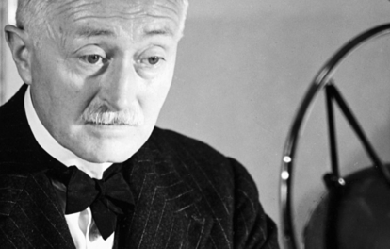
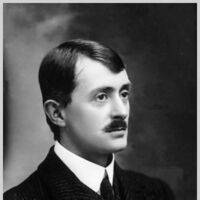
John Edward Masefield (1 June 1878 – 12 May 1967) was an English poet and writer, and Poet Laureate of the United Kingdom from 1930 until his death in 1967. He is remembered as the author of the classic children's novels The Midnight Folk and The Box of Delights, and poems, including "The Everlasting Mercy" and "Sea-Fever". Early life Masefield was born in Ledbury in Herefordshire, to Caroline and George Masefield, a solicitor. His mother died giving birth to his sister when Masefield was only six, and he went to live with his aunt. His father died soon after following a mental breakdown. After an unhappy education at the King's School in Warwick (now known as Warwick School), where he was a boarder between 1888 and 1891, he left to board the HMS Conway, both to train for a life at sea, and to break his addiction to reading, of which his aunt thought little. He spent several years aboard this ship and found that he could spend much of his time reading and writing. It was aboard the Conway that Masefield's love for story-telling grew. While on the ship, he listened to the stories told about sea lore. He continued to read, and felt that he was to become a writer and story teller himself. In 1894, Masefield boarded the Gilcruix, destined for Chile - this first voyage bringing him the experience of sea sickness. He recorded his experiences while sailing through the extreme weather, his journal entries reflecting a delight in seeing flying fish, porpoises, and birds, and was awed by the beauty of nature, including a rare sighting of a nocturnal rainbow on his voyage. On reaching Chile, Masefield suffered from sunstroke and was hospitalized. He eventually returned home to England as a passenger aboard a steam ship. In 1895, Masefield returned to sea on a windjammer destined for New York City. However, the urge to become a writer and the hopelessness of life as a sailor overtook him, and in New York, he deserted ship. He lived as a vagrant for several months, before returning to New York City, he did many odd jobs, finding work as an assistant to a bar keeper. Sometime around Christmas in 1895, Masefield read the December 1895 edition of Truth, a New York periodical, which contained the poem "The Piper of Arll" by Duncan Campbell Scott. Ten years later, Masefield wrote to Scott to tell him what reading that poem had meant to him: "I had never (till that time) cared very much for poetry, but your poem impressed me deeply, and set me on fire. Since then poetry has been the one deep influence in my life, and to my love of poetry I owe all my friends, and the position I now hold." For the next two years, Masefield was employed in a carpet factory, where long hours were expected and conditions were far from ideal. He purchased up to 20 books a week, and devoured both modern and classical literature. His interests at this time were diverse and his reading included works by George du Maurier, Dumas, Thomas Browne, Hazlitt, Dickens, Kipling, and R. L. Stevenson. Chaucer also became very important to him during this time, as well as poetry by Keats and Shelley. He eventually returned home to England in 1897 as a passenger aboard a steam ship. When Masefield was 23, he met his future wife, Constance Crommelin, who was 35. Educated in classics and English Literature, and a mathematics teacher, Constance was a match for Masefield despite the difference in age. The couple had two children (Judith, born in 1904, and Lewis, in 1910). By the time he was 24, Masefield's poems were being published in periodicals and his first collected works, Salt-Water Ballads (1902) was published, the poem "Sea-Fever" appearing in this book. Masefield then wrote the novels, Captain Margaret (1908) and Multitude and Solitude (1909). In 1911, after a long drought of poem writing, he composed "The Everlasting Mercy", the first of his narrative poems, and within the next year, Masefield had produced two more, "The Widow in the Bye Street" and "Dauber". As a result, Masefield became widely known to the public and was praised by critics, and in 1912, he was awarded the annual Edmond de Polignac prize. World War I to appointment as Poet Laureate When World War I began, though old enough to be exempted from military service, Masefield joined the staff of a British hospital for French soldiers, Hôpital Temporaire d'Arc-en-Barrois, Haute-Marne, France, serving briefly in 1915 as a hospital orderly, later publishing his own account of his experiences. After returning home, Masefield was invited to the United States on a three month lecture tour. Although Masefield's primary purpose was to lecture on English Literature, a secondary purpose was to collect information on the mood and views of Americans regarding the war in Europe. When he returned to England, he submitted a report to the British Foreign Office, and suggested that he be allowed to write a book about the failure of the allied efforts in the Dardanelles, which possibly could be used in the US in order to counter what he thought was German propaganda there. As a result, Masefield wrote Gallipoli. This work was a success, encouraging the British people, and lifting them somewhat from the disappointment they had felt as a result of the Allied losses in the Dardanelles. Due to the success of his wartime writings, Masefield met with the head of British Military Intelligence in France and was asked to write an account of the Battle of the Somme. Although Masefield had grand ideas for his book, he was denied access to the official records, and therefore, what was to be his preface to the book was published as "The Old Front Line", a description of the geography of the Somme area. In 1918, Masefield returned to America on his second lecture tour. Masefield spent much of his time speaking and lecturing to American soldiers waiting to be sent to Europe. These speaking engagements were very successful, and on one occasion, a battalion of all black soldiers danced and sang for him after his talk. During this tour, he matured as a public speaker and realized his ability to touch the emotions of his audience with his style of speaking, learning to speak publicly with his own heart, rather than from dry scripted speeches. Towards the end of his trip, both Yale and Harvard Universities conferred honorary Doctorates of Letters on him. Masefield entered the 1920s as an accomplished and respected writer. His family was able to settle on Boar's Hill, a somewhat rural setting not far from Oxford, and Masefield took up beekeeping, goat-herding and poultry-keeping. He continued to meet with success, the 1923 edition of "Collected Poems" selling approximately 80,000 copies. He produced three poems early in this decade. The first was Reynard The Fox, a poem that has been critically compared with works of Geoffrey Chaucer. This was followed by Right Royal and King Cole, poems where the relationship of humanity and nature emphasized. While Reynard is the best known of these, all met with acclaim. After King Cole Masefield turned away from the long poem and back to the novel, and from 1924 till the Second World War published twelve novels, which vary from stories of the sea (The Bird of Dawning, Victorious Troy) to social novels about modern England (The Hawbucks, The Square Peg), and from tales of an imaginary land in Central America (Sard Harker, Odtaa) to fantasies for children (The Midnight Folk, The Box of Delights). This variety in genre testifies most impressively to the breadth of his imagination, though it probably reduced his sales (which remained very respectable, however), since most readers of novels like knowing what to expect from their favourite authors. In this same period he wrote a large number of dramatic pieces. Most of these were based on Christian themes, and Masefield, to his amazement, encountered a ban on the performance of plays on biblical subjects that went back to the Reformation and had been revived a generation earlier to prevent production of Oscar Wilde's Salome. However, a compromise was reached, and in 1928 his "The Coming of Christ" was the first play to be performed in an English Cathedral since the Middle Ages. In 1921, Masefield received an Honorary Doctorate of Literature from Oxford University, and in 1923, organized the Oxford Recitations, an annual contest whose purpose was "to discover good speakers of verse and to encourage ‘the beautiful speaking of poetry.’" The Recitations were seen as a success given the numbers of contest applicants, the promotion of natural speech in poetical recitations, and the number of people learning how to listen to poetry. Masefield began to question however, whether the Recitations should continue as a contest, believing that the event should become more of a festival. In 1929, Masefield broke with the contest concept, and the Recitations came to an end. Later years and death In 1930, on the death of Robert Bridges, a new Poet Laureate was needed. Many felt that Rudyard Kipling was a likely choice, however, upon the recommendation of Prime Minister Ramsay MacDonald, King George V appointed Masefield, who remained in office until his death in 1967. The only person to hold the office for a longer period was Alfred, Lord Tennyson. On his appointment The Times newspaper said of him: ... his poetry could touch to beauty the plain speech of everyday life. Although the requirements of Poet Laureate had changed, and those in the office were rarely required to write verse for special occasions, Masefield took his appointment seriously and produced a large quantity of verse. Poems composed in his official capacity were sent to The Times. Masefield's modesty was shown by his inclusion of a stamped envelope with each submission so that his composition could be returned if it were found unacceptable for publication. Masefield was commissioned to write a poem to be set to music by the Master of the King's Musick, Sir Edward Elgar and performed at the unveiling of the Queen Alexandra Memorial by the King on 8 June 1932. This was the ode "So many true Princesses who have gone". After his appointment, Masefield was awarded the Order of Merit by King George V and many honorary degrees from British universities, in 1937 being elected as President of the Society of Authors. Masefield encouraged the continued development of English literature and poetry, and began the annual awarding of the Royal Medals for Poetry for a first or second published edition of poetry by a poet under the age of 35. Additionally, his speaking engagements were calling him further away, often on much longer tours, yet he still produced significant amounts of work in a wide variety of genres. To those he had already used he now added autobiography, producing New Chum, In the Mill, and So Long to Learn. Some critics judged Masefield to be an even finer writer of prose than of verse. It was not until about the age of 70 that Masefield slowed his pace due to illness. In 1960, Constance died at 93, after a long illness. Although her death was heartrending, he had spent a tiring year watching the woman he loved die. He continued his duties as Poet Laureate; In Glad Thanksgiving, his last book, was published when he was 88 years old. In late 1966, Masefield developed gangrene in his ankle. This spread to his leg, and he died of the infection on 12 May 1967. According to his wishes, he was cremated and his ashes placed in Poets’ Corner in Westminster Abbey. Later, the following verse was discovered, written by Masefield, addressed to his "Heirs, Administrators, and Assigns": Let no religious rite be done or read In any place for me when I am dead, But burn my body into ash, and scatter The ash in secret into running water, Or on the windy down, and let none see; And then thank God that there's an end of me. The Masefield Centre at Warwick School, which Masefield attended, and a high school in Ledbury, Herefordshire have been named in his honour. In 1977, Folkways Records released an album of his poetry, including some read by Masefield himself. Art song settings Many of Masefield's short poems were set as art songs by British composers of the time. Best known by far is John Ireland's "Sea Fever", the lasting popularity of which belies any mismatch between the urgency of the language and the slow, swung melody. Frederick Keel crafted several songs drawn from the Salt-Water Ballads and elsewhere. Of these, "Trade Winds" was particularly popular in its day, despite the tongue-twisting challenges the text presents to the singer. Keel's defiant setting of "Tomorrow", written while interned at Ruhleben during World War I, was frequently programmed at the BBC Proms after the war. Another memorable wartime composition is Ivor Gurney's climactic declamation of "By a bierside", a setting quickly set down in 1916 during a brief spell behind the lines. References Wikipedia - http://en.wikipedia.org/wiki/John_Masefield

I write poetry. It's my entire life, pretty much. Part of me wants to delete all of this, because most of it is childish and stupid. There is a part of me though that kinda wants to hang on to some of it cause it's part of my history. I no longer have physical copies of any of these, and if I delete it without copying it it'll just be gone. No editing; no rewrites; no revisions. Just gone. Never to return again. What should I do?
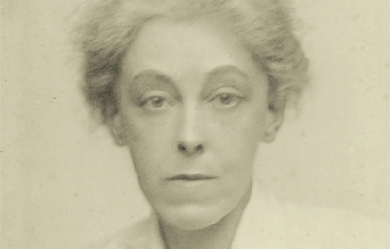
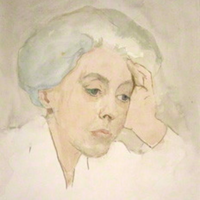
Charlotte Mary Mew (15 November 1869– 24 March 1928) was an English poetess, whose work spans the cusp between Victorian poetry and Modernism. She was born in Bloomsbury, London, the daughter of the architect Frederick Mew, who designed Hampstead town hall, and Anna Kendall.The marriage produced seven children. Charlotte, nicknamed Lotti by her family, attended Gower Street School, where she became infatuated with the school’s headmistress, Lucy Harrison, and lectures at University College London. Her father died in 1898 without making adequate provision for his family; two of her siblings suffered from mental illness, and were committed to institutions, and three others died in early childhood leaving Charlotte, her mother and her sister, Anne. Charlotte and Anne made a pact never to marry for fear of passing on insanity to their children. (One author calls Charlotte “almost certainly chastely lesbian)”. Through most of her adult life, Mew wore masculine attire and kept her hair short, adopting the appearance of a dandy.
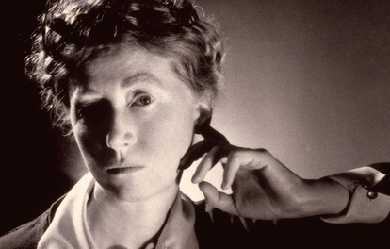
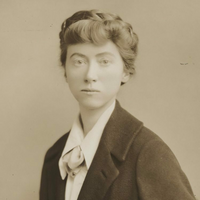
Born near St. Louis, Missouri, on November 15, 1887, Marianne Moore was raised in the home of her grandfather, a Presbyterian pastor. After her grandfather's death, in 1894, Moore and her family stayed with other relatives, and in 1896 they moved to Carlisle, Pennsylvania. She attended Bryn Mawr College and received her B.A. in 1909. Following graduation, Moore studied typing at Carlisle Commercial College, and from 1911 to 1915 she was employed as a school teacher at the Carlisle Indian School. In 1918, Moore and her mother moved to New York City, and in 1921, she became an assistant at the New York Public Library. She began to meet other poets, such as William Carlos Williams and Wallace Stevens, and to contribute to the Dial, a prestigious literary magazine. She served as acting editor of the Dial from 1925 to 1929. Along with the work of such other members of the Imagist movement as Ezra Pound, Williams, and H. D., Moore's poems were published in the Egoist, an English magazine, beginning in 1915. In 1921, H.D. published Moore's first book, Poems, without her knowledge. Moore was widely recognized for her work; among her many honors were the Bollingen prize, the National Book Award, and the Pulitzer Prize. She wrote with the freedom characteristic of the other modernist poets, often incorporating quotes from other sources into the text, yet her use of language was always extraordinarily condensed and precise, capable of suggesting a variety of ideas and associations within a single, compact image. In his 1925 essay "Marianne Moore," William Carlos Williams wrote about Moore's signature mode, the vastness of the particular: "So that in looking at some apparently small object, one feels the swirl of great events." She was particularly fond of animals, and much of her imagery is drawn from the natural world. She was also a great fan of professional baseball and an admirer of Muhammed Ali, for whom she wrote the liner notes to his record, I Am the Greatest! Deeply attached to her mother, she lived with her until Mrs. Moore's death in 1947. Marianne Moore died in New York City in 1972. Poetry Collected Poems (1951) Like a Bulwark (1956) Nevertheless (1944) O to Be a Dragon (1959) Observations (1924) Poems (1921) Selected Poems (1935) Tell Me, Tell Me (1966) The Arctic Fox (1964) The Complete Poems of Marianne Moore (1967) The Pangolin and Other Verse (1936) What Are Years? (1941) Prose A Marianne Moore Reader (1961) Predilections (1955) The Complete Prose of Marianne Moore (1987)
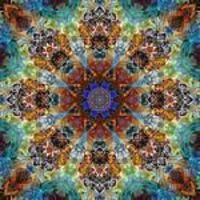
I have always preferred to read a book than watch a film. Poetry became something I enjoyed because it doesn't always give up its meaning at first. You have to chew over it and contemplate. Some poetry expands my mind and other poetry breaks my heart. My life so far has been pretty straight forward - I have a lot to be grateful for. I'm mostly a happy person, but like everyone sometimes I get sad, and when I do I write.
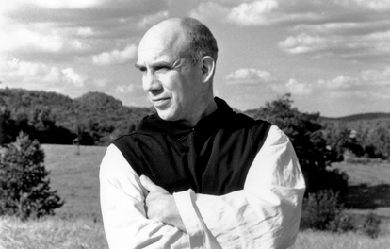
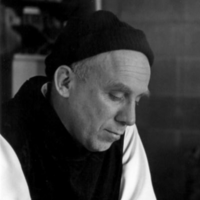
Thomas Merton (January 31, 1915 – December 10, 1968) was an American Trappist monk, writer, theologian, mystic, poet, social activist, and scholar of comparative religion. On May 26, 1949, he was ordained to the priesthood and given the name Father Louis.Merton wrote more than 70 books, mostly on spirituality, social justice and a quiet pacifism, as well as scores of essays and reviews. Among Merton’s most enduring works is his bestselling autobiography The Seven Storey Mountain (1948), which sent scores of World War II veterans, students, and even teenagers flocking to monasteries across the US, and was also featured in National Review’s list of the 100 best non-fiction books of the century. Merton was a keen proponent of interfaith understanding. He pioneered dialogue with prominent Asian spiritual figures, including the Dalai Lama, the Japanese writer D. T. Suzuki, the Thai Buddhist monk Buddhadasa, and the Vietnamese monk Thich Nhat Hanh, and authored books on Zen Buddhism and Taoism. In the years since his death, Merton has been the subject of several biographies.
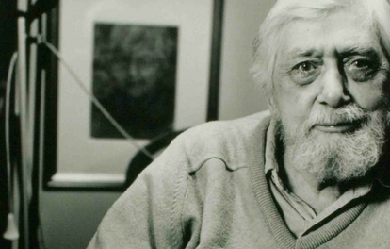
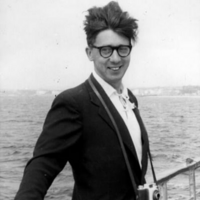
Edwin George Morgan (27 April 1920 – 17 August 2010) was a Scottish poet and translator who was associated with the Scottish Renaissance. He is widely recognised as one of the foremost Scottish poets of the 20th century. In 1999, Morgan was made the first Glasgow Poet Laureate. In 2004, he was named as the first Scottish national poet: The Scots Makar. Life and career Morgan was born in Glasgow and grew up in Rutherglen. His parents were Presbyterian. As a child he was not surrounded by books, nor did he have any literary acquaintances. Schoolmates labelled him a swot. He convinced his parents to finance his membership of several book clubs in Glasgow. The Faber Book of Modern Verse (1936) was a “revelation” to him, he later said. Morgan entered the University of Glasgow in 1937. It was at university that he studied French and Russian, while self-educating in “a good bit of Italian and German” as well. After interrupting his studies to serve in World War II as a non-combatant conscientious objector with the Royal Army Medical Corps, Morgan graduated in 1947 and became a lecturer at the University. He worked there until his retirement as a full professor in 1980. Morgan described ‘CHANGE RULES!’ as 'the supreme graffito’, whose liberating double-take suggests both a lifelong commitment to formal experimentation and his radically democratic left-wing political perspectives. From traditional sonnet to blank verse, from epic seriousness to camp and ludic nonsense; and whether engaged in time-travelling space fantasies or exploring contemporary developments in physics and technology, the range of Morgan’s voices is a defining attribute. Morgan first outlined his sexuality in Nothing Not Giving Messages: Reflections on his Work and Life (1990). He had written many famous love poems, among them “Strawberries” and “The Unspoken”, in which the love object was not gendered; this was partly because of legal problems at the time but also out of a desire to universalise them, as he made clear in an interview with Marshall Walker. At the opening of the Glasgow LGBT Centre in 1995, he read a poem he had written for the occasion, and presented it to the Centre as a gift. In 2002, he became the patron of Our Story Scotland. At the Opening of the Scottish Parliament building in Edinburgh on 9 October 2004, Liz Lochhead read a poem written especially for the occasion by Morgan, titled “Poem for the Opening of the Scottish Parliament”. She was announced as Morgan’s successor as Scots Makar in January 2011. Near the end of his life, Morgan reached a new audience after collaborating with the Scottish band Idlewild on their album The Remote Part. In the closing moments of the album’s final track "In Remote Part/ Scottish Fiction", he recites a poem, “Scottish Fiction”, written specifically for the song. In 2007, Morgan contributed two poems to the compilation Ballads of the Book, for which a range of Scottish writers created poems to be made into songs by Scottish musicians. Morgan’s songs “The Good Years” and “The Weight of Years” were performed by Karine Polwart and Idlewild respectively. Nobel Laureate Seamus Heaney "[paid] formal homage" during a 2005 visit. In later life Morgan was cared for at a residential home as his health worsened. He published a collection in April 2010, months before his death, titled Dreams and Other Nightmares to mark his 90th birthday. Up until his death, he was the last survivor of the canonical 'Big Seven’ (the others being Hugh MacDiarmid, Robert Garioch, Norman MacCaig, Iain Crichton Smith, George Mackay Brown, and Sorley MacLean). On 17 August 2010, Edwin Morgan died of pneumonia in Glasgow, Scotland, at the age of 90. The Scottish Poetry Library made the announcement in the morning. Tributes came from, among others, politicians Alex Salmond and Iain Gray, as well as Carol Ann Duffy, the UK Poet Laureate. Testamentary provisions First Minister of Scotland Alex Salmond’s leader’s speech to the Scottish National Party Conference at Inverness on 22 October 2011 referred to Morgan’s bequest of £918,000 to the party in his will as “transformational”. The next day it was announced that all of the bequest would be used for the party’s independence referendum campaign. Morgan also left £45,000 to a number of friends, former colleagues and charity organisations and set aside another £1 million for the creation of an annual award scheme for young poets in Scotland. Poetry Morgan worked in a wide range of forms and styles, from the sonnet to concrete poetry. His Collected Poems appeared in 1990. He has also translated from a wide range of languages, including Russian, Hungarian, French, Italian, Latin, Spanish, Portuguese, German and Old English (Beowulf). Many of these are collected in Rites of Passage. Selected Translations (1976). His 1952 translation of Beowulf has become a standard translation in America. Morgan was also influenced by the American beat poets, with their simple, accessible ideas and language being prominent features in his work. In 1968 Morgan wrote a poem entitled Starlings In George Square. This poem could be read as a comment on society’s reluctance to accept the integration of different races. Other people have also considered it to be about the Russian Revolution in which “Starling” could be a reference to “Stalin”. Other notable poems include: The Death of Marilyn Monroe (1962) – an outpouring of emotion after the death of one of the world’s most talented women. The Billy Boys (1968) – flashback of the gang warfare in Glasgow led by Billy Fullerton in the Thirties. Glasgow 5 March 1971 – robbery by two youths by pushing an unsuspecting couple through a shop window on Sauchiehall Street In the Snackbar – concise description of an encounter with a disabled pensioner in a Glasgow restaurant. A Good Year for Death (26 September 1977) – a description of five famous people from the world of popular culture who died in 1977 Poem for the Opening of the Scottish Parliament – which was read by Liz Lochhead at the opening ceremony because he was too ill. (9 October 2004) Books Awards and honours * 1972 PEN Memorial Medal (Hungary) * 1982 OBE * 1983 Saltire Society Scottish Book of the Year Award for Poems of Thirty Years * 1985 Soros Translation Award (New York) * 1998 Stakis Prize for Scottish Writer of the Year for Virtual and Other Realities * 2000 Queen’s Gold Medal for Poetry * 2001 Oxford-Weidenfeld Translation Prize for Jean Racine: Phaedra * 2002 The Saltire Society’s Andrew Fletcher of Saltoun award for notable service to Scotland * 2003 Jackie Forster Memorial Award for Culture * 2003 Lifetime Achievement Award for Literature, from the Saltire Society and the Scottish Arts Council * 2007 T. S. Eliot Prize for A Book of Lives. * 2008 Scottish Arts Council Book of the Year Award References Wikipedia—https://en.wikipedia.org/wiki/Edwin_Morgan_(poet)
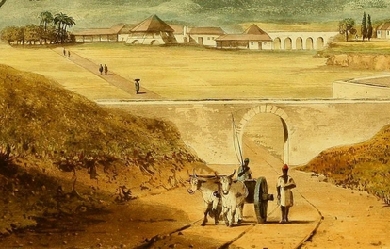
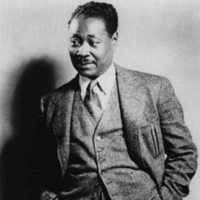
Festus Claudius “Claude” McKay (September 15, 1889– May 22, 1948) was a Jamaican-American writer and poet, who was a seminal figure in the Harlem Renaissance. He wrote four novels: Home to Harlem (1928), a best-seller that won the Harmon Gold Award for Literature, Banjo (1929), Banana Bottom (1933), and in 1941 a manuscript called Amiable With Big Teeth: A Novel of the Love Affair Between the Communists and the Poor Black Sheep of Harlem that has not yet been published. McKay also authored collections of poetry, a collection of short stories, Gingertown (1932), two autobiographical books, A Long Way from Home (1937) and My Green Hills of Jamaica (published posthumously), and a non-fiction, socio-historical treatise entitled Harlem: Negro Metropolis (1940). His 1922 poetry collection, Harlem Shadows, was among the first books published during the Harlem Renaissance. His Selected Poems was published posthumously, in 1953. McKay was attracted to communism in his early life, but he always asserted that he never became an official member of the Communist Party USA. However, some scholars dispute the claim that he was not a communist at that time, noting his close ties to active members, his attendance at communist-led events, and his months-long stay in the Soviet Union in 1922–23, which he wrote about very favorably. He gradually became disillusioned with communism, however, and by the mid-1930s, had begun to write negatively about it. Early life Claude McKay was born in Nairne Castle near James Hill, Clarendon, Jamaica. He was the youngest child of Thomas Francis McKay and Hannah Ann Elizabeth Edwards, well-to-do farmers who had enough property to qualify to vote. Thomas McKay’s parents were of Ashanti descent, like many other black Jamaicans. Claude recounted that his parents would share stories of Ashanti customs with him. At the age of four years, McKay started basic school at the church that he attended. At the age of seven, he was sent to live with his oldest brother, Uriah Theodore, a teacher, to be given the best education available. While living with this brother, McKay became an avid reader of classical and British literature, as well as philosophy, science and theology. He started writing poetry at the age of 10. In 1906, McKay became apprenticed to a carriage and cabinet maker known as Old Brenga, staying in his apprenticeship for about two years. During that time, in 1907, McKay met a man named Walter Jekyll, who became a mentor and an inspiration for him and encouraged him to concentrate on his writing. Jekyll convinced McKay to write in his native dialect and even later set some of McKay’s verses to music. Jekyll helped McKay publish his first book of poems, Songs of Jamaica, in 1912. These were the first poems published in Jamaican Patois (dialect of mainly English words and African structure). McKay’s next volume, Constab Ballads (1912), was based on his experiences of joining the constabulary for a brief period in 1911. Career in the United States McKay left for the U.S. in 1912 to attend Tuskegee Institute. McKay was shocked by the intense racism he encountered when he arrived in Charleston, South Carolina, where many public facilities were segregated, which inspired him to write more poetry. At Tuskegee, he disliked the “semi-military, machine-like existence there” and quickly left to study at Kansas State University. At Kansas State, he read W. E. B. Du Bois’ Souls of Black Folk, which had a major impact on him and stirred his political involvement. But despite superior academic performance, in 1914 McKay decided he did not want to be an agronomist and moved to New York, where he married his childhood sweetheart Eulalie Lewars. McKay published two poems in 1917 in The Seven Arts under the pseudonym Eli Edwards while working as a waiter on the railways. In 1919, he met Crystal and Max Eastman, who produced The Liberator (where McKay would serve as co-executive editor until 1922). It was here, as the co-editor of The Liberator, that he published one of his most famous poems, “If We Must Die”, during the “Red Summer”, a period of intense racial violence against black people in Anglo-American societies. The poem was reportedly later quoted by Winston Churchill during World War II. McKay became involved with a group of black radicals who were unhappy both with Marcus Garvey’s nationalism and the middle-class reformist NAACP. These included other Caribbean writers such as Cyril Briggs, Richard B. Moore, and Wilfrid Domingo. They fought for black self-determination within the context of socialist revolution. Together they founded the semi-secret revolutionary organization, the African Blood Brotherhood. Hubert Harrison had asked McKay to write for Garvey’s Negro World, but only a few copies of the paper have survived from this period, none of which contain any articles by McKay. McKay soon left for London, England. In London McKay arrived in London in autumn 1919. He used to frequent a soldier’s club in Drury Lane and the International Socialist Club in Shoreditch. A militant atheist, he also joined the Rationalist Press Association. It was during this period that McKay’s commitment to socialism deepened and he read Marx assiduously. At the International Socialist Club, McKay met Shapurji Saklatvala, A. J. Cook, Guy Aldred, Jack Tanner, Arthur McManus, William Gallacher, Sylvia Pankhurst and George Lansbury. He was soon invited to write for Workers’ Dreadnought. In 1920, the Daily Herald, a socialist paper published by George Lansbury, included a racist article written by E. D. Morel. Entitled “Black Scourge in Europe: Sexual Horror Let Loose by France on the Rhine”, it insinuated gross hypersexuality on black people in general, but Lansbury refused to print McKay’s response. This response then appeared in Workers’ Dreadnought. This started his regular involvement with Workers’ Dreadnought and the Workers’ Socialist Federation, a Council Communist group active in the East End and which had a majority of women involved in it at all levels of the organization. He became a paid journalist for the paper; some people claim he was the first black journalist in Britain. He attended the Communist Unity Conference that established the Communist Party of Great Britain. At this time he also had some of his poetry published in the Cambridge Magazine, edited by C. K. Ogden. When Sylvia Pankhurst was arrested under the Defense of the Realm Act for publishing articles “calculated and likely to cause sedition amongst His Majesty’s forces, in the Navy, and among the civilian population,” McKay had his rooms searched. He is likely to have been the author of “The Yellow Peril and the Dockers” attributed to “Leon Lopez”, which was one of the articles cited by the government in its case against Workers’ Dreadnought. In Russia From November 1922 to June 1923, he visited the Soviet Union and attended the fourth congress of the Communist International in Moscow. There, he met many leading Bolsheviks including Leon Trotsky, Nikolai Bukharin and Karl Radek. Claude McKay details his experience in Russia in the essay “Soviet Russia and the Negro” published in the December 1923 issue of The Crisis magazine. McKay wrote the manuscripts for a book of essays called Negroes in America and three stories published as Lynching in America, both of which appeared first in Russian and were re-translated into English; McKay’s original English manuscripts have been lost. When Russia was under the rule of communists led by Lenin he was invited to Russia during the reconstruction of the country. Home to Harlem and other works In 1928, McKay published his most famous novel, Home to Harlem, which won the Harmon Gold Award for Literature. The novel, which depicted street life in Harlem, would have a major impact on black intellectuals in the Caribbean, West Africa, and Europe. McKay’s novel gained a substantial readership, especially with people who wanted to know more about the intense, and sometimes shocking, details of Harlem nightlife. His novel was an attempt to capture the energetic and intense spirit of the “uprooted black vagabonds.” Home to Harlem was a work in which McKay looked among the common people for a distinctive black identity. Despite this, the book drew fire from one of McKay’s heroes, W. E. B. Du Bois. To Du Bois, the novel’s frank depictions of sexuality and the nightlife in Harlem only appealed to the "prurient demand[s]" of white readers and publishers looking for portrayals of black “licentiousness.” As Du Bois said, “Home to Harlem... for the most part nauseates me, and after the dirtier parts of its filth I feel distinctly like taking a bath.” Modern critics now dismiss this criticism from Du Bois, who was more concerned with using art as propaganda in the struggle for African-American political liberation than in the value of art to showcase the truth about the lives of black people. McKay’s other novels were Banjo (1929), and Banana Bottom (1933). Banjo was noted in part for its portrayal of how the French treated people from its sub-Saharan African colonies, as the novel centers on black seamen in Marseilles. Aimé Césaire stated that in Banjo, blacks were described truthfully and without “inhibition or prejudice”. Banana Bottom was McKay’s third novel. The book is said to follow a principal theme of a black individual in search of establishing a cultural identity in a white society. The book discusses underlying racial and cultural tensions. McKay also authored a collection of short stories, Gingertown (1932), two autobiographical books, A Long Way from Home (1937) and My Green Hills of Jamaica (published posthumously in 1979), and a non-fiction, socio-historical treatise entitled Harlem: Negro Metropolis (1940). His collection Selected Poems (1953) was published posthumously and included a Foreword by John Dewey. McKay became an American citizen in 1940. Becoming disillusioned with communism, McKay embraced the social teachings of the Roman Catholic Church, to which he converted in 1944. He died from a heart attack in Chicago at the age of 58. Legacy In 1977, the government of Jamaica named Claude McKay the national poet and posthumously awarded him the Order of Jamaica for his contribution to literature. In 2002, scholar Molefi Kete Asante listed Claude McKay on his list of 100 Greatest African Americans. He is regarded as the “foremost left-wing black intellectual of his age” and his work heavily influenced a generation of black authors including James Baldwin and Richard Wright. Awards Jamaican Institute of Arts and Sciences, Musgrave Medal, 1912, for two volumes of poetry, Songs of Jamaica and Constab Ballads. Harmon Foundation Award for distinguished literary achievement, NAACP, 1929, for Harlem Shadows and Home to Harlem. James Weldon Johnson Literary Guild Award, 1937. Order of Jamaica, 1977. Selected bibliography Poetry collections * Songs of Jamaica (1912) * Constab Ballads (1912) * Spring in New Hampshire and Other Poems (1920) * Harlem Shadows (1922) * The Selected Poems of Claude McKay (1953) Fiction * Home to Harlem (1928) * Banjo (1929) * Banana Bottom (1933) * Gingertown (1932) Non-fiction * A Long Way from Home (1937) * My Green Hills of Jamaica (1979) * Harlem: Negro Metropolis (1940) Unknown manuscript * A previously unknown manuscript of a 1941 novel by McKay was authenticated in 2012. The manuscript, Amiable With Big Teeth: A Novel of the Love Affair Between the Communists and the Poor Black Sheep of Harlem, was discovered by Jean-Christophe Cloutier in the Samuel Roth Papers, a previously untouched university archive at Columbia University, in 2009. The novel centers on the ideas and events that animated Harlem on the cusp of World War II (such as Benito Mussolini’s invasion of Ethiopia). Working in collaboration, Professor Cloutier and Professor Brent Hayes Edwards successfully authenticated the manuscript, and have received permission from the McKay estate to publish the novel, a satire set in 1936, with an introduction about how it was found and its provenance verified. Sources * James, Winston (2001), A Fierce Hatred of Injustice: Claude McKay’s Jamaica and His Poetry of Rebellion, London: Verso. ISBN 978-1859847404. * James, Winston (2003), "Becoming the People’s Poet: Claude McKay’s Jamaican Years, 1889-1912," in Small Axe: A Caribbean Journal of Criticism, March 2003, No. 13, pp. 17–45. * Long, Richard A., Afro-American Writing: An Anthology of Prose and Poetry, Penn State Press, 1985. ISBN 0-271-00376-6 Chicago Defender articles * “Claude McKay, African Poet, Made Co-Editor”, The Chicago Defender (National edition)(1921–1267), April 2, 1921; ProQuest Historical Newspapers: Chicago Defender (1910-1975). * “Claude McKay, noted, Poet, Author, Once Idol of Russia, Dies Here”, The Chicago Defender (1921–1967), May 29, 1948. * “McKay Going to Russia”, The Chicago Defender (National edition)(1921–1967), August 19, 1922. * “Claude McKay by James Weldon Johnson”, The Chicago Defender (National edition)(1921–1267), March 3, 1928. References Wikipedia—https://en.wikipedia.org/wiki/Claude_McKay

Hi, this is The wise girl behind the mask, I just want to say I love writing poems. Its fun and actually calms me in some way. So just for heads up when I write, its going to be based off my mood. For example, if I am happy I'll write a happy poem, if I am angry I'll write a angry poem. And I can get very, very angry, so please don't write any bad reviews. I picked The wise girl behind the mask as my name because I am shy. I don't really talk that much but when I do, people are shocked how mature I sound. People say that when I talk, my words are filled with weight and wisdom. Well that explains the wise girl, let me tell you behind the mask girl. When I go out in public I where a mask, I pretend that I'm happy, goofy, and pretend to be a air head. However, I am really smart and don't forget it, I am a straight A and high honor roll student. I hate it when everyone treats me like a child, like a idiot. I am just trying to please my family and friends, but its hard, tiring, humiliating, and I hate it. Though, its not like I have a choice, if my family and friends knew the real me, they will just judge and not listen. I like to write poems, even though I curse sometimes, I only do it to get out my feelings, that they make me feel. Now let me tell you about the real me, I love writing, books, outdoor activities, and parks. I might sound like a stiff, but I can be a bit of a trouble-maker, I love to pull pranks sometimes. I also love music, I can not survive without music. My favorite color is blue, I'm a girl, not telling you my age, but I am young. I hate pink, most ugliest color in the world, I am tall for my age, love animals. My goal is to be a veterinarian in the future. Now that everything is settled, come and read my poems, tell me what you think. Have a jolly day, and good bye for now.
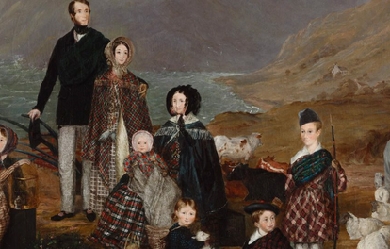
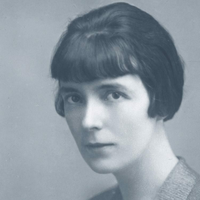
Kathleen Mansfield Murry (14 October 1888– 9 January 1923) was a prominent New Zealand modernist short story writer who was born and brought up in colonial New Zealand and wrote under the pen name of Katherine Mansfield. At 19, Mansfield left New Zealand and settled in the United Kingdom, where she became a friend of modernist writers such as D.H. Lawrence and Virginia Woolf. In 1917 she was diagnosed with extrapulmonary tuberculosis, which led to her death at the age of 34. Biography Early life Mansfield was born Kathleen Mansfield Beauchamp in 1888 into a socially prominent family in Wellington, New Zealand. Her father was a banker and she was a cousin of the author Countess Elizabeth von Arnim. She had two older sisters, a younger sister and a younger brother, born in 1894. Her father, Harold Beauchamp, became the chairman of the Bank of New Zealand and was knighted. Her grandfather was Arthur Beauchamp, who briefly represented the Picton electorate in Parliament. In 1893 the Mansfield family moved from Thorndon to Karori, where Mansfield spent the happiest years of her childhood. She used some of her memories of this time as an inspiration for the “Prelude” story. Her first published stories appeared in the High School Reporter and the Wellington Girls’ High School magazine (the family returned to Wellington proper in 1898), in 1898 and 1899. In 1902 she became enamoured of a cellist, Arnold Trowell, although the feelings were largely unreciprocated. Mansfield herself was an accomplished cellist, having received lessons from Trowell’s father. Mansfield wrote in her journals of feeling alienated in New Zealand, and of how she had become disillusioned because of the repression of the Māori people. Māori characters are often portrayed in a sympathetic or positive light in her later stories, such as “How Pearl Button Was Kidnapped”. In 1903 she moved to London, where she attended Queen’s College along with her sisters. Mansfield recommenced playing the cello, an occupation that she believed she would take up professionally, but she also began contributing to the college newspaper with such dedication that she eventually became its editor. She was particularly interested in the works of the French Symbolists and Oscar Wilde, and she was appreciated among her peers for her vivacious and charismatic approach to life and work. She met fellow writer Ida Baker (also known as Lesley Moore), a South African, at the college, and they became lifelong friends. Mansfield did not become involved in much political activity when she lived in London. For example, she did not actively support the suffragette movement in the UK (women in New Zealand had gained the right to vote in 1893). Mansfield travelled in continental Europe between 1903 and 1906, staying mainly in Belgium and Germany. After finishing her schooling in England, she returned to New Zealand in 1906, and only then began to write short stories. She had several works published in the Native Companion (Australia), her first paid writing work, and by this time she had her heart set on becoming a professional writer. It was also the first occasion on which she used the pseudonym “K. Mansfield”. She rapidly wearied of the provincial New Zealand lifestyle and of her family, and two years later headed again for London. Her father sent her an annual allowance of 100 pounds for the rest of her life. In later years she expressed both admiration and disdain for New Zealand in her journals, but she was never able to return there because of her tuberculosis. Mansfield had two romantic relationships with women that are notable for their pre-eminence in her journal entries. She continued to have male lovers, and attempted to repress her feelings at certain times. Her first same-gender romantic relationship was with Maata Mahupuku (sometimes known as Martha Grace), a wealthy young Māori woman whom she had first met at Miss Swainson’s school in Wellington, and then again in London in 1906. In June 1907 she wrote: “I want Maata—I want her as I have had her—terribly. This is unclean I know but true.” She often referred to Maata as Carlotta. She wrote about Maata in several short stories. Maata married in 1907 but it is claimed that she sent money to Mansfield in London. The second relationship, with Edith Kathleen Bendall, took place from 1906 to 1908. Mansfield also professed her adoration for her in her journals. Return to London Back in London in 1908, Mansfield quickly fell into a bohemian way of life. She published only one story and one poem during her first 15 months there. Mansfield sought out the Trowell family for companionship, and while Arnold was involved with another woman Mansfield embarked on a passionate affair with his brother, Garnet. By early 1909 she had become pregnant by Garnet, though Trowell’s parents disapproved of the relationship and the two broke up. She hastily entered into a marriage with George Bowden, a singing teacher 11 years older than she; they were married on 2 March, but she left him the same evening, before the marriage could be consummated. After a brief reunion with Garnet, Mansfield’s mother, Annie Beauchamp, arrived in 1909. She blamed the breakdown of the marriage to Bowden on a lesbian relationship between Mansfield and Baker, and she quickly had her daughter despatched to the spa town of Bad Wörishofen in Bavaria, Germany. Mansfield miscarried after attempting to lift a suitcase on top of a cupboard. It is not known whether her mother knew of this miscarriage when she left shortly after arriving in Germany, but she cut Mansfield out of her will. Mansfield’s time in Bavaria had a significant effect on her literary outlook. In particular, she was introduced to the works of Anton Chekhov. She returned to London in January 1910. She then published more than a dozen articles in A.R. Orage’s socialist magazine The New Age, and became a friend and lover of Beatrice Hastings, who lived with Orage. Her experiences of Germany formed the foundation of her first published collection, In a German Pension, (1911), which she later described as “immature”. Meeting Murry Soon afterwards Mansfield submitted a lightweight story to a new avant-garde magazine called Rhythm. The piece was rejected by the magazine’s editor, John Middleton Murry, who requested something darker. Mansfield responded with “The Woman at the Store”, a tale of murder and mental illness. Mansfield was inspired at this time by Fauvism. In 1911 Mansfield and Murry began a relationship that culminated in their marriage in 1918, although she left him twice, in 1911 and 1913. In October 1912 the publisher of Rhythm, Charles Granville (sometimes known as Stephen Swift), absconded to Europe and left Murry responsible for the debts the magazine had accumulated. Mansfield pledged her father’s allowance towards the magazine, but it was discontinued, being reorganised as The Blue Review in 1913 and folding after three issues. Mansfield and Murry were persuaded by their friend Gilbert Cannan to rent a cottage next to his windmill in Cholesbury, Buckinghamshire in 1913, in an attempt to alleviate Mansfield’s ill health. In January 1914 the couple moved to Paris, in the hope that a change of setting would make writing easier for both of them. Mansfield wrote only one story during her time there ("Something Childish But Very Natural") before Murry was recalled to London to declare bankruptcy. In 1914 Mansfield had a brief affair with the French writer Francis Carco. Her visit to him in Paris in February 1915 is retold in one of her short stories, “An Indiscreet Journey”. Mansfield’s life and work were changed by the death in 1915 of her beloved younger brother, Leslie Heron “Chummie” Beauchamp, as a New Zealand soldier in France. She began to take refuge in nostalgic reminiscences of their childhood in New Zealand. In a poem describing a dream she had shortly after his death, she wrote By the remembered stream my brother stands Waiting for me with berries in his hands... “These are my body. Sister, take and eat.” At the beginning of 1917 Mansfield and Murry separated, although he continued to visit her at her new apartment. Baker, whom Mansfield often called, with a mixture of affection and disdain, her “wife”, moved in with her shortly afterwards. Mansfield entered into her most prolific period of writing after 1916, which began with several stories, including “Mr Reginald Peacock’s Day” and “A Dill Pickle”, being published in The New Age. Woolf and her husband, Leonard, who had recently set up Hogarth Press, approached her for a story, and Mansfield presented “Prelude”, which she had begun writing in 1915 as “The Aloe”. The story depicts a family of New Zealanders moving house. In December 1917 Mansfield was diagnosed with tuberculosis. Rejecting the idea of staying in a sanatorium on the grounds that it would cut her off from writing, she moved abroad to avoid the English winter. She stayed at a half-deserted and cold hotel in Bandol, France, where she became depressed but continued to produce stories, including "Je ne parle pas français". “Bliss”, the story that lent its name to her second collection of stories in 1920, was also published in 1918. Her health continued to deteriorate and she had her first lung haemorrhage in March. By April Mansfield’s divorce from Bowden had been finalised, and she and Murry married, only to part again two weeks later. They came together again, however, and in March 1919 Murry became editor of Athenaeum, for which Mansfield wrote more than 100 book reviews, collected posthumously as Novels and Novelists. During the winter of 1918–19 she and Baker stayed in a villa in San Remo, Italy. Their relationship came under strain during this period, and after she wrote to Murry to express her feelings of depression he stayed over Christmas. Although her relationship with Murry became increasingly distant after 1918 and the two often lived apart, this intervention of his spurred her on, and she wrote “The Man Without a Temperament”, the story of an ill wife and her long-suffering husband. Mansfield followed her first collection of short stories, Bliss (1920), with another collection The Garden Party, published in 1922. Final years Mansfield spent her last years seeking increasingly unorthodox cures for her tuberculosis. In February 1922 she consulted the Russian physician Ivan Manoukhin, whose “revolutionary” treatment, which consisted of bombarding her spleen with X-rays, caused Mansfield to develop heat flashes and numbness in her legs. In October 1922 Mansfield moved to Georges Gurdjieff’s Institute for the Harmonious Development of Man in Fontainebleau, France, where she was put under the care of Olgivanna Lazovitch Hinzenburg (who later married Frank Lloyd Wright). As a guest rather than a pupil of Gurdjieff, Mansfield was not required to take part in the rigorous routine of the Institute, but she spent much of her time there with her mentor, Alfred Richard Orage and her last letters inform Murry of her attempts to apply some of Gurdjieff’s teachings to her own life. Mansfield suffered a fatal pulmonary haemorrhage in January 1923, after running up a flight of stairs. She died on 9 January and was buried in a cemetery in Avon. Mansfield was a prolific writer in the final years of her life. Much of her work remained unpublished at her death, and Murry took on the task of editing and publishing it in two additional volumes of short stories (The Dove’s Nest in 1923 and Something Childish in 1924), a volume of Poems, The Aloe, Novels and Novelists, and collections of her letters and journals. Legacy The following high schools in New Zealand have a house named after her: Rangitoto College, Westlake Girls’ High School, Macleans College all in Auckland, Tauranga Girls’ College in Tauranga, Wellington Girls’ College in Wellington, Rangiora High School in North Canterbury and Southland Girls’ High School in Invercargill. She has been honoured at Karori Normal School in Wellington which has a stone monument dedicated to her with a plaque commemorating her work and her time at the school. She has also been recognised at Samuel Marsden Collegiate School (previously Fitzherbert Tce School) with a painting and award in her name. There is a Park dedicated to her in Thorndon, Wellington. A street in Menton, France, where she lived and wrote, is named after her and a Fellowship is offered annually to enable a New Zealand writer to work at her former home, the Villa Isola Bella. New Zealand’s pre-eminent short story competition is also named in her honour. She was the subject of the 1973 BBC miniseries A Picture of Katherine Mansfield starring Vanessa Redgrave. The six-part series included adaptations of Mansfield’s life and of her short stories. In 2011, a biopic film titled “Bliss”, was made of her early beginnings as a writer in New Zealand, played by Kate Elliott and featured on the TVNZ TV-movie series “Sunday Theatre” that aired on 28 August 2011.
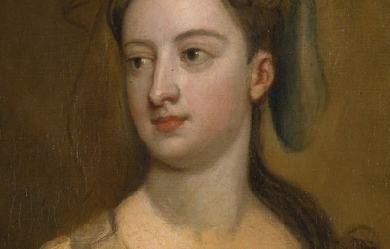
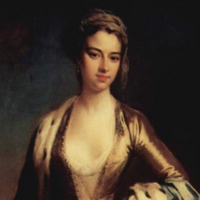
Lady Mary Wortley Montagu (baptized 26 May 1689– 21 August 1762) was an English aristocrat, letter writer and poet. Lady Mary is today chiefly remembered for her letters, particularly her letters from travels to the Ottoman Empire, as wife to the British ambassador to Turkey, which have been described by Billie Melman as “the very first example of a secular work by a woman about the Muslim Orient”. Aside from her writing, Lady Mary is also known for introducing and advocating for smallpox inoculation to Britain after her return from Turkey. Her writings usually address and challenge the hindering contemporary social attitudes towards women and their intellectual and social growth. Early life and education Lady Mary Wortley Montagu, Mary Pierrepont, was born in May 1689; her baptism took place on 26 May, at a few days old, at St. Paul’s Church in Covent Garden. She was the eldest child of Evelyn Pierrepont, 1st Duke of Kingston-upon-Hull, and his first wife, Mary (Fielding) Pierrepont. Her mother had three more children, two girls and a boy, before dying in October 1692. The children were raised by their Pierrepont grandmother until Mary was nine years old. Lady Mary was then passed to the care of her father upon her grandmother’s death. She began her education in her father’s home. Family holdings were extensive, including Thoresby Hall and Holme Pierrepont Hall in Nottinghamshire, and a house in West Dean in Wiltshire. To supplement the instruction of a despised governess, Lady Mary used the library in her father’s mansion, Thoresby Hall in Nottinghamshire, to “steal” her education, teaching herself Latin, a language reserved for men at the time. By 1705, at the age of fourteen or fifteen, Mary Pierrepont had written two albums filled with poetry, a brief epistolary novel, and a prose-and-verse romance modeled after Aphra Behn’s Voyage to the Isle of Love (1684). She also corresponded with two bishops, Thomas Tenison and Gilbert Burnet. Marriage and embassy to Ottoman Empire By 1710 Lady Mary had two possible suitors to choose from: Edward Wortley Montagu and Clotworthy Skeffington. Lady Mary corresponded with Edward Wortley Montagu via letters from 28 March 1710 to 2 May 1711. After May 1711 there was a break in contact between Lady Mary and Edward Wortley Montagu. Mary’s father, now Marquess of Dorchester, rejected Wortley Montagu as a prospect because he refused to entail his estate on a possible heir. Her father pressured her to marry Clotworthy Skeffington, heir to an Irish peerage. In order to avoid marriage to Skeffington, she eloped with Wortley. The marriage license is dated 17 August 1712, the marriage probably took place on 23 August 1712. The early years of Lady Mary Wortley Montagu’s married life were spent in the country. She had a son, Edward Wortley Montagu the younger, on 16 May 1713, in London. A couple of months later, on 1 July 1713 Lady Mary’s brother, aged twenty, died of smallpox and left behind two children. On 13 October 1714, her husband accepted post as Junior Commissioner of Treasury. When Lady Mary joined him in London, her wit and beauty soon made her a prominent figure at court. She was among the society of George I and the Prince of Wales, and counted amongst her friends Molly Skerritt, Lady Walpole, John, Lord Hervey, Mary Astell, Sarah Churchill, Duchess of Marlborough, Alexander Pope, John Gay, and Abbé Antonio Conti. In December 1715, Lady Mary contracted smallpox. She survived, but while she was ill someone circulated the satirical “court eclogues” she had been writing. One of the poems was read as an attack on Caroline, Princess of Wales, in spite of the fact that the “attack” was voiced by a character who was herself heavily satirized. In 1716, Edward Wortley Montagu was appointed Ambassador at Istanbul. In August 1716, Lady Mary accompanied him to Vienna, and thence to Adrianople and Istanbul. He was recalled in 1717, but they remained at Istanbul until 1718. While away from England, the Wortley Montagu’s had a daughter on 19 January 1718, who would grow up to be Mary, Countess of Bute. After an unsuccessful delegation between Austria and Turkey/Ottoman Empire, they set sail for England via the Mediterranean, and reached London on 2 October 1718. The story of this voyage and of her observations of Eastern life is told in Letters from Turkey, a series of lively letters full of graphic descriptions; Letters is often credited as being an inspiration for subsequent female travelers/writers, as well as for much Orientalist art. During her visit she was sincerely charmed by the beauty and hospitality of the Ottoman women she encountered, and she recorded her experiences in a Turkish bath. She also recorded a particularly amusing incident in which a group of Turkish women at a bath in Sofia, horrified by the sight of the stays she was wearing, exclaimed that "the husbands in England were much worse than in the East, for [they] tied up their wives in little boxes, the shape of their bodies". Lady Mary wrote about misconceptions previous travelers, specifically male travelers, had recorded about the religion, traditions and the treatment of women in the Ottoman Empire. Her gender and class status provided her with access to female spaces, that were closed off to males. Her personal interactions with Ottoman women enabled her to provide a more accurate account of Turkish women, their dress, habits, traditions, limitations and liberties. Lady Mary returned to the West with knowledge of the Ottoman practice of inoculation against smallpox, known as variolation. Ottoman smallpox inoculation Lady Mary Wortley Montagu defied convention most memorably by introducing smallpox inoculation to Western medicine after witnessing it during her travels and stay in the Ottoman Empire. In the Ottoman Empire, she visited the women in their segregated zenanas, making friends and learning about Turkish customs. There she witnessed the practice of inoculation against smallpox—variolation—which she called engrafting, and wrote home about it a number of her letters. Variolation used live smallpox virus in the pus taken from a smallpox blister in a mild case of the disease and introduced it into scratched skin of a previously uninfected person to promote immunity to the disease. Lady Mary’s brother had died of smallpox in 1713 and her own famous beauty had been marred by a bout with the disease in 1715. Lady Mary was eager to spare her children, thus, in March 1718 she had her nearly five-year-old son inoculated with the help of Embassy surgeon Charles Maitland. On her return to London, she enthusiastically promoted the procedure, but encountered a great deal of resistance from the medical establishment, because it was an Oriental folk treatment process. In April 1721, when a smallpox epidemic struck England, she had her daughter inoculated by Charles Maitland, the same physician who had inoculated her son at the Embassy in Turkey, and publicized the event. This was the first such operation done in Britain. She persuaded Princess Caroline to test the treatment. In August 1721, seven prisoners at Newgate Prison awaiting execution were offered the chance to undergo variolation instead of execution: they all survived and were released. Controversy over smallpox inoculation intensified, however, Caroline, Princess of Wales was convinced. The Princess’s two daughters were successfully inoculated in April 1722 by French-born surgeon Claudiius Amyand. In response to the general fear of inoculation, Lady Mary, under a pseudonym, wrote and published an article describing and advocating in favor of inoculation in September 1722. In later years, Edward Jenner, who was 13 years old when Lady Mary died, developed the much safer technique of vaccination using cowpox instead of smallpox. As vaccination gained acceptance, variolation gradually fell out of favor. Later years After returning to England, Lady Mary took less interest in court compared to her earlier years. Instead she was more focused on the upbringing of her children, reading, writing and editing her travel letters—which she then chose not to publish. Before starting for the East Lady Mary Wortley Montagu had met Alexander Pope, and during her Embassy travels with her husband, they wrote each other a series of letters. While Pope may have been fascinated by her wit and elegance, Lady Mary’s replies to his letters reveal that she was not equally smitten. Very few letters passed between them after Lady Mary’s return to England, and various reasons have been suggested for the subsequent estrangement. In 1728, Pope attacked Lady Mary in his Dunciad inaugurating a decade in which most of his publications made some sort of allegation against her. Lady Mary went through a series of trials with her children. In 1726 and 1727, Lady Mary’s son ran away from Westminster School several times. He was entrusted to a tutor with strict orders to keep young Edward Montagu abroad. In later years her son managed to return to England without permission and continued to have a strained relationship with both his parents. In August 1736, Lady Mary’s daughter, married John Stuart, 3rd Earl of Bute, despite her parent’s disapproval of the match. The same year Lady Mary met and fell in love with Francesco Algarotti, Count Algarotti, competing with an equally smitten John Hervey for the Count’s affections. Lady Mary wrote many letters to Algarotti in English and in French after his departure from England in September 1736. In July 1739 Lady Mary departed England ostensibly for health reasons declaring her intentions to winter in the south of France. In reality, she left to visit and live with Algarotti in Venice. Their relationship ended in 1741 after Lady Mary and Algarotti were both on diplomatic mission in Turin. Lady Mary stayed abroad and traveled extensively. After traveling to Venice, Florence, Rome, Genoa and Geneva, she finally settled in Avignon in 1742. She left Avignon in 1746 for Brescia, where she fell ill and stayed for nearly a decade, leaving for Lovere in 1754. After August 1756, she resided in Venice and Padua and saw Algarotti again in November. Lady Mary exchanged letters with her daughter, Lady Bute, discussing topics such as philosophy, literature, and the education of girls, as well as conveying details of her geographical and social surroundings. Lady Mary received news of her husband Edward Wortley Montagu’s death in 1761 and left Venice for England. En route to London, she handed her Embassy Letters to the Rev. Benjamin Sowden of Rotterdam, for safe keeping and “to be dispos’d of as he thinks proper”. Lady Mary reached London in January 1762, and died in the year of her return, on 21 August 1762. Important works and literary place Although Lady Mary Wortley Montagu is now best known for her Embassy Letters, she wrote poetry and essays as well. A number of Lady Mary’s poems and essays were printed in her lifetime, either without or with her permission, in newspapers, in miscellanies, and independently. Montagu did not intend to publish her poetry, but it did circulate widely, in manuscript, among members of her own social circle. Lady Mary was highly suspicious of any idealizing literary language. She wrote most often in heroic couplets, a serious poetic form to employ, and, according to Susan Staves,"excelled at “answer poems.”. Some of her widely anthologized poems include “Constantinople” and “Epistle from Mrs. Yonge to her Husband.” “Constantinople,” written January 1718, is a beautiful poem in heroic couplets describing Britain and Turkey through human history, and representing the state of mind “of knaves, coxcombs, the mob, and party zealous—all characteristic of the London of her time.”. “Epistle from Mrs. Yonge to her Husband,” written 1724, stages a letter from Mrs. Yonge to her libertine husband and exposes the social double standard which led to the shaming and distress of Mrs. Yonge after her divorce. In 1737 and 1738, Lady Mary published anonymously a political periodical called the Nonsense of Common-Sense, supporting the Robert Walpole government (the title was a reference to a journal of the liberal opposition entitled Common Sense). She wrote six Town Eclogues. She wrote notable letters describing her travels through Europe and the Ottoman Empire; these appeared after her death in three volumes. Lady Mary corresponded with Anne Wortley and wrote courtship letters to her future husband Edward Wortley Montagu, as well as love letters to Francesco Algarotti. She corresponded with notable writers, intellectuals and aristocrats of her day. She wrote gossip letters and letters berating the vagaries of fashionable people to her sister, Lady Mar, and exchanged intellectual letters with her adult daughter, Lady Bute. Although, not published during her lifetime, her letters from Turkey were clearly intended for print. She revised them extensively and gave a transcript to the Rev. Benjamin Sowden in Rotterdam in 1761. During the twentieth century Lady Mary’s letters were edited separately from her essays, poems and plays. Montagu’s Turkish letters were to prove an inspiration to later generations of European women travelers and writers. In particular, Montagu staked a claim to the authority of women’s writing, due to their ability to access private homes and female-only spaces where men were not permitted. The title of her published letters refers to “Sources that Have Been Inaccessible to Other Travellers”. The letters themselves frequently draw attention to the fact that they present a different (and, Montagu asserts, more accurate) description than that provided by previous (male) travelers: “You will perhaps be surpriz’d at an Account so different from what you have been entertaind with by the common Voyage-writers who are very fond of speaking of what they don’t know.”. Montagu provides an intimate description of the women’s bathhouse in Sofia, in which she derides male descriptions of the bathhouse as a site for unnatural sexual practices, instead insisting that it was “the Women’s coffee house, where all the news of the Town is told, Scandal invented, etc”. However, Montagu’s detailed descriptions of nude Oriental beauties provided inspiration for male artists such as Ingres, who restored the explicitly erotic content that Montagu had denied. In general, Montagu dismisses the quality of European travel literature of the 18th century as nothing more than "trite observations…superficial…[of] boys [who] only remember where they met with the best wine or the prettyest women.". Montagu’s Turkish letters were frequently cited by imperial women travelers, more than a century after her journey. Such writers cited Montagu’s assertion that women travelers could gain an intimate view of Turkish life that was not available to their male counterparts. However, they also added corrections or elaborations to her observations. In 1739 a book was printed by an unknown author under the pseudonym “Sophia, a person of quality”, titled Woman not Inferior to Man. This book is often attributed to Lady Mary. Her Letters and Works were published in 1837. Montagu’s octogenarian granddaughter Lady Louisa Stuart contributed to this, anonymously, an introductory essay called Biographical Anecdotes of Lady M. W. Montagu, from which it was clear that Stuart was troubled by her grandmother’s focus on sexual intrigues and did not see Lady Mary Wortley Montagu’s Account of the Court of George I at his Accession as history. However, Montagu’s historical observations, both in the “Anecdotes” and the “Turkish Embassy Letters,” prove quite accurate when put in context. Despite the availability of her work in print and the revival efforts of Feminist scholars, the complexity and brilliance of Lady Mary Wortley Montagu’s extensive body of work has not yet been recognized to the fullest.

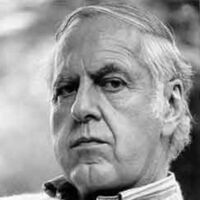
William Meredith was born in New York City on January 9, 1919. He attended the Lenox School in Massachusetts and in 1940 graduated from Princeton University with an A.B. in English, Magna Cum Laude. His senior thesis was on the work of Robert Frost, a major influence for Meredith throughout his career. He worked briefly as a reporter for The New York Times before joining the U.S. Army Air Force in 1941. In 1942 he served as a carrier pilot for the U.S. Navy, achieving the rank of lieutenant. During his service, Meredith's first book of poems, Love Letter from an Impossible Land (1944), was chosen by Archibald MacLeish for the Yale Series of Younger Poets. For the next few years he taught English at Princeton University as Woodrow Wilson Fellow in Writing and Resident Fellow in Creative Writing while still in the U.S. Navy Reserves. Won the Pulitzer Prize for poetry.
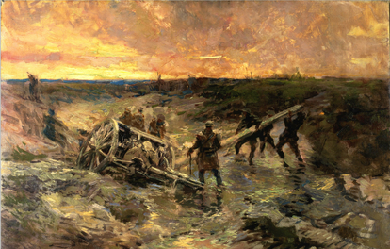
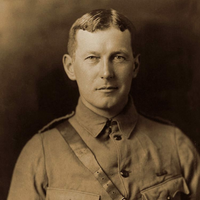
Lieutenant Colonel John McCrae, MD (November 30, 1872– January 28, 1918) was a Canadian poet, physician, author, artist and soldier during World War I, and a surgeon during the Second Battle of Ypres, in Belgium. He is best known for writing the famous war memorial poem “In Flanders Fields”. McCrae died of pneumonia near the end of the war.

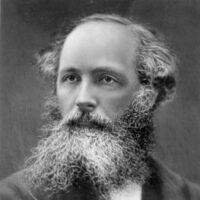
James Clerk Maxwell of Glenlair FRS FRSE (13 June 1831 – 5 November 1879) was a Scottish physicist and mathematician. His most prominent achievement was formulating classical electromagnetic theory. This unites all previously unrelated observations, experiments, and equations of electricity, magnetism, and optics into a consistent theory. Maxwell's equations demonstrate that electricity, magnetism and light are all manifestations of the same phenomenon, namely the electromagnetic field. Subsequently, all other classic laws or equations of these disciplines became simplified cases of Maxwell's equations. Maxwell's achievements concerning electromagnetism have been called the "second great unification in physics", after the first one realised by Isaac Newton. Maxwell demonstrated that electric and magnetic fields travel through space in the form of waves and at the constant speed of light. In 1865, Maxwell published A Dynamical Theory of the Electromagnetic Field. It was with this that he first proposed that light was in fact undulations in the same medium that is the cause of electric and magnetic phenomena. His work in producing a unified model of electromagnetism is one of the greatest advances in physics. Maxwell also helped develop the Maxwell–Boltzmann distribution, which is a statistical means of describing aspects of the kinetic theory of gases. These two discoveries helped usher in the era of modern physics, laying the foundation for such fields as special relativity and quantum mechanics. Maxwell is also known for presenting the first durable colour photograph in 1861 and for his foundational work on the rigidity of rod-and-joint frameworks like those in many bridges. Maxwell is considered by many physicists to be the 19th-century scientist having the greatest influence on 20th-century physics. His contributions to the science are considered by many to be of the same magnitude as those of Isaac Newton and Albert Einstein. In the millennium poll—a survey of the 100 most prominent physicists—Maxwell was voted the third greatest physicist of all time, behind only Newton and Einstein. On the centennial of Maxwell's birthday, Einstein himself described Maxwell's work as the "most profound and the most fruitful that physics has experienced since the time of Newton." Einstein kept a photograph of Maxwell on his study wall, alongside pictures of Michael Faraday and Newton. Early life, 1831–39 James Clerk Maxwell was born 13 June 1831 at 14 India Street, Edinburgh, to John Clerk, an advocate, and Frances Cay. Maxwell's father was a man of comfortable means, of the Clerk family of Penicuik, Midlothian, holders of the baronetcy of Clerk of Penicuik; his brother being the 6th Baronet. James was the first cousin of notable 19th century artist Jemima Blackburn. He had been born John Clerk, adding the surname Maxwell to his own after he inherited a country estate in Middlebie, Kirkcudbrightshire from connections to the Maxwell family, themselves members of the peerage. Maxwell's parents did not meet and marry until they were well into their thirties, unusual for the time. Moreover, his mother was nearly 40 years old when James was born. They had had one earlier child, a daughter, Elizabeth, who died in infancy. They named their only surviving child James, a name that had sufficed not only for his grandfather, but also many of his other ancestors. When Maxwell was young his family moved to Glenlair House, which his parents had built on the 1500 acre (6. km2) Middlebie estate. All indications suggest that Maxwell had maintained an unquenchable curiosity from an early age. By the age of three, everything that moved, shone, or made a noise drew the question: "what's the go o' that?". In a passage added to a letter from his father to his sister-in-law Jane Cay in 1834, his mother described this innate sense of inquisitiveness: "He is a very happy man, and has improved much since the weather got moderate; he has great work with doors, locks, keys, etc., and "show me how it doos" is never out of his mouth. He also investigates the hidden course of streams and bell-wires, the way the water gets from the pond through the wall...” Education, 1839–47 Recognising the potential of the young boy, his mother Frances took responsibility for James' early education, which in the Victorian era was largely the job of the woman of the house. She was however taken ill with abdominal cancer, and after an unsuccessful operation, died in December 1839 when Maxwell was only eight. James' education was then overseen by John Maxwell and his sister-in-law Jane, both of whom played pivotal roles in the life of Maxwell. His formal schooling began unsuccessfully under the guidance of a sixteen-year-old hired tutor. Little is known about the young man John Maxwell hired to instruct his son, except that he treated the younger boy harshly, chiding him for being slow and wayward. John Maxwell dismissed the tutor in November 1841, and after considerable thought, sent James to the prestigious Edinburgh Academy. He lodged during term times at the house of his aunt Isabella. During this time his passion for drawing was encouraged by his older cousin Jemima, who was herself a talented artist. The ten-year-old Maxwell, having been raised in isolation on his father's countryside estate, did not fit in well at school. The first year had been full, obliging him to join the second year with classmates a year his senior. His mannerisms and Galloway accent struck the other boys as rustic, and his having arrived on his first day of school wearing a pair of homemade shoes and a tunic, earned him the unkind nickname of "Daftie". Maxwell, however, never seemed to have resented the epithet, bearing it without complaint for many years. Social isolation at the Academy ended when he met Lewis Campbell and Peter Guthrie Tait, two boys of a similar age who were to become notable scholars later in life. They would remain lifetime friends. Maxwell was fascinated by geometry at an early age, rediscovering the regular polyhedron before any formal instruction. Much of his talent however, went overlooked, and despite winning the school's scripture biography prize in his second year his academic work remained unnoticed until, at the age of 13, he won the school's mathematical medal and first prize for both English and poetry. Maxwell’s interests ranged far beyond the school syllabus, and he did not pay particular attention to examination performance. He wrote his first scientific paper at the age of 14. In it he described a mechanical means of drawing mathematical curves with a piece of twine, and the properties of ellipses, Cartesian ovals, and related curves with more than two foci. His work, Oval Curves, was presented to the Royal Society of Edinburgh by James Forbes, who was a professor of natural philosophy at Edinburgh University. Maxwell was deemed too young for the work presented. The work was not entirely original, since Descartes had also examined the properties of such multifocal curves in the seventeenth century, but Maxwell had simplified their construction. Edinburgh University, 1847–50 Maxwell left the Academy in 1847 at the age of 16 and began attending classes at the University of Edinburgh. Having had the opportunity to attend the University of Cambridge after his first term Maxwell instead decided to complete the full course of his undergraduate studies at Edinburgh. The academic staff of Edinburgh University included some highly regarded names, and Maxwell's first year tutors included Sir William Hamilton, who lectured him on logic and metaphysics, Philip Kelland on mathematics, and James Forbes on natural philosophy. Maxwell did not find his classes at Edinburgh University very demanding, and was therefore able to immerse himself in private study during free time at the university, and particularly when back home at Glenlair. There he would experiment with improvised chemical, electric, and magnetic apparatuses, but his chief concerns regarded the properties of polarized light. He constructed shaped blocks of gelatine, subjected them to various stresses, and with a pair of polarizing prisms given to him by the famous scientist William Nicol he would view the coloured fringes which had developed within the jelly. Through this practice Maxwell discovered photoelasticity, which is a means of determining the stress distribution within physical structures. Maxwell contributed two papers for the Transactions of the Royal Society of Edinburgh at the age of 18. One of these, On the equilibrium of elastic solids, laid the foundation for an important discovery later in his life, which was the temporary double refraction produced in viscous liquids by shear stress. His other paper was titled Rolling curves, and just as with the paper Oval Curves that he had written at the Edinburgh Academy, Maxwell was again considered too young to stand at the rostrum and present it himself. The paper was delivered to the Royal Society by his tutor Kelland instead. University of Cambridge, 1850–56 In October 1850, already an accomplished mathematician, Maxwell left Scotland for the University of Cambridge. He initially attended Peterhouse, but before the end of his first term transferred to Trinity College, where he believed it would be easier to obtain a fellowship. At Trinity, he was elected to the elite secret society known as the Cambridge Apostles. In November 1851, Maxwell studied under William Hopkins, whose success in nurturing mathematical genius had earned him the nickname of "senior wrangler-maker". A considerable part of Maxwell's translation of his equations regarding electromagnetism was accomplished during his time at Trinity. In 1854, Maxwell graduated from Trinity with a degree in mathematics. He scored second highest in the final examination, coming behind Edward Routh, and thereby earning himself the title of Second Wrangler. He was later declared equal with Routh, however, in the more exacting ordeal of the Smith's Prize examination. Immediately after earning his degree, Maxwell read a novel paper to the Cambridge Philosophical Society entitled On the transformation of surfaces by bending. This is one of the few purely mathematical papers he had written, and it demonstrated Maxwell's growing stature as a mathematician. Maxwell decided to remain at Trinity after graduating and applied for a fellowship, which was a process that he could expect to take a couple of years. Buoyed by his success as a research student, he would be free, aside from some tutoring and examining duties, to pursue scientific interests at his own leisure. The nature and perception of colour was one such interest, and had begun at Edinburgh University while he was a student of Forbes. Maxwell took the coloured spinning tops invented by Forbes, and was able to demonstrate that white light would result from a mixture of red, green and blue light. His paper, Experiments on colour, laid out the principles of colour combination, and was presented to the Royal Society of Edinburgh in March 1855. Fortunately for Maxwell this time it would be he himself who delivered his lecture. Maxwell was made a fellow of Trinity on 10 October 1855, sooner than was the norm, and was asked to prepare lectures on hydrostatics and optics, and to set examination papers. However, the following February he was urged by Forbes to apply for the newly vacant Chair of Natural Philosophy at Marischal College, Aberdeen. His father assisted him in the task of preparing the necessary references, but he would die on 2 April, at Glenlair before either knew the result of Maxwell's candidacy. Maxwell nevertheless accepted the professorship at Aberdeen, leaving Cambridge in November 1856. Aberdeen University, 1856–60 The 25-year-old Maxwell was a decade and a half younger than any other professor at Marischal, but engaged himself with his new responsibilities as head of department, devising the syllabus and preparing lectures. He committed himself to lecturing 15 hours a week, including a weekly pro bono lecture to the local working men's college. He lived in Aberdeen during the six months of the academic year, and spent the summers at Glenlair, which he had inherited from his father. His mind was focused on a problem that had eluded scientists for two hundred years: the nature of Saturn's rings. It was unknown how they could remain stable without breaking up, drifting away or crashing into Saturn. The problem took on a particular resonance at this time as St John's College, Cambridge had chosen it as the topic for the 1857 Adams Prize. Maxwell devoted two years to studying the problem, proving that a regular solid ring could not be stable, and a fluid ring would be forced by wave action to break up into blobs. Since neither was observed, Maxwell concluded that the rings must comprise numerous small particles he called "brick-bats", each independently orbiting Saturn. Maxwell was awarded the £130 Adams Prize in 1859 for his essay On the stability of Saturn's rings; he was the only entrant to have made enough headway to submit an entry. His work was so detailed and convincing that when George Biddell Airy read it he commented "It is one of the most remarkable applications of mathematics to physics that I have ever seen." It was considered the final word on the issue until direct observations by the Voyager flybys of the 1980s confirmed Maxwell's prediction. Maxwell would also go on to disprove mathematically the nebular hypothesis (which stated that the solar system formed through the progressive condensation of a purely gaseous nebula), forcing the theory to account for additional portions of small solid particles. In 1857 Maxwell befriended the Reverend Daniel Dewar, who was the Principal of Marischal, and through him met Dewar's daughter, Katherine Mary Dewar. They were engaged in February 1858 and married in Aberdeen on 2 June 1858. On the marriage record, Maxwell is listed as Professor of Natural Philosophy in Mareschal College, Aberdeen. Seven years Maxwell's senior, comparatively little is known of Katherine although it is known that she helped in his lab and worked on experiments in viscosity. Maxwell's biographer and friend Campbell adopted an uncharacteristic reticence on the subject of Katherine, though describing their married life as "one of unexampled devotion". In 1860, Marischal College merged with the neighbouring King's College to form the University of Aberdeen. There was no room for two professors of Natural Philosophy, and Maxwell, despite his scientific reputation, found himself laid off. He was unsuccessful in applying for Forbes' recently vacated chair at Edinburgh, the post instead going to Tait. Maxwell was granted the Chair of Natural Philosophy at King's College London instead. After recovering from a near-fatal bout of smallpox in the summer of 1860, Maxwell headed south to London with his wife Katherine. King's College London, 1860–65 Maxwell's time at King's was probably the most productive of his career. He was awarded the Royal Society's Rumford Medal in 1860 for his work on colour, and was later elected to the Society in 1861. This period of his life would see him display the world's first light-fast colour photograph, further develop his ideas on the viscosity of gases, and propose a system of defining physical quantities—now known as dimensional analysis. Maxwell would often attend lectures at the Royal Institution, where he came into regular contact with Michael Faraday. The relationship between the two men could not be described as close, as Faraday was 40 years Maxwell's senior and showed signs of senility. They nevertheless maintained a strong respect for each other's talents. This time is especially known for the advances Maxwell made in the fields of electricity and magnetism. He had examined the nature of both electric and magnetic fields in his two-part paper On physical lines of force, published in 1861, in which he had provided a conceptual model for electromagnetic induction, consisting of tiny spinning cells of magnetic flux. Two more parts later added to the paper were published in early 1862. In the first of these he discussed the nature of electrostatics and displacement current. The final part dealt with the rotation of the plane of polarization of light in a magnetic field, a phenomenon discovered by Faraday and now known as the Faraday effect. Later years In 1865, Maxwell resigned the chair at King's College London and returned to Glenlair with Katherine. He wrote a textbook entitled Theory of Heat (1871), and an elementary treatise, Matter and Motion (1876). Maxwell was also the first to make explicit use of dimensional analysis, in 1871. In 1871, he became the first Cavendish Professor of Physics at Cambridge. Maxwell was put in charge of the development of the Cavendish Laboratory. He supervised every step in the progress of the building and of the purchase of the very valuable collection of apparatus paid for by its generous founder, the 7th Duke of Devonshire (chancellor of the university, and one of its most distinguished alumni). One of Maxwell's last great contributions to science was the editing (with copious original notes) of the electrical researches of Henry Cavendish, from which it appeared that Cavendish researched, amongst other things, such questions as the mean density of the earth and the composition of water. He died in Cambridge of abdominal cancer on 5 November 1879 at the age of 48. His mother had died at the same age of the same type of cancer. Maxwell is buried at Parton Kirk, near Castle Douglas in Galloway, Scotland. The extended biography The Life of James Clerk Maxwell, by his former schoolfellow and lifelong friend Professor Lewis Campbell, was published in 1882. His collected works, including the series of articles on the properties of matter, such as "Atom", "Attraction", "Capillary action", "Diffusion", "Ether", etc., were issued in two volumes by the Cambridge University Press in 1890. Personality As a great lover of Scottish poetry, Maxwell memorised poems and wrote his own. The best known is Rigid Body Sings, closely based on Comin' Through the Rye by Robert Burns, which he apparently used to sing while accompanying himself on a guitar. It has the opening lines Gin a body meet a body Flyin' through the air. Gin a body hit a body, Will it fly? And where? A collection of his poems was published by his friend Lewis Campbell in 1882. Many appreciations of Maxwell remark upon his remarkable intellectual qualities being matched by social awkwardness. Ivan Tolstoy, author of one of Maxwell's biographies, has noted the frequency with which scientists writing short biographies of Maxwell omit the subject of his Christianity. He was an evangelical Presbyterian, and in his later years became an Elder of the Church of Scotland. Maxwell's religious beliefs and related activities have been the focus of several peer-reviewed and well-referenced papers. Attending both Church of Scotland (his father's denomination) and Episcopalian (his mother's denomination) services as a child, Maxwell later underwent an evangelical conversion in April 1853, which committed him to an anti-positivist position. Contributions Electromagnetism Maxwell had studied and commented on the field of electricity and magnetism as early as 1855/6 when "On Faraday's lines of force" was read to the Cambridge Philosophical Society. The paper presented a simplified model of Faraday's work, and how the two phenomena were related. He reduced all of the current knowledge into a linked set of differential equations with 20 equations in 20 variables. This work was later published as "On physical lines of force" in March 1861. Around 1862, while lecturing at King's College, Maxwell calculated that the speed of propagation of an electromagnetic field is approximately that of the speed of light. He considered this to be more than just a coincidence, and commented "We can scarcely avoid the conclusion that light consists in the transverse undulations of the same medium which is the cause of electric and magnetic phenomena." Working on the problem further, Maxwell showed that the equations predict the existence of waves of oscillating electric and magnetic fields that travel through empty space at a speed that could be predicted from simple electrical experiments; using the data available at the time, Maxwell obtained a velocity of 310,, m/s. In his 1864 paper "A dynamical theory of the electromagnetic field", Maxwell wrote, "The agreement of the results seems to show that light and magnetism are affections of the same substance, and that light is an electromagnetic disturbance propagated through the field according to electromagnetic laws". His famous equations, in their modern form of four partial differential equations, first appeared in fully developed form in his textbook A Treatise on Electricity and Magnetism in 1873. Most of this work was done by Maxwell at Glenlair during the period between holding his London post and his taking up the Cavendish chair. Maxwell expressed electromagnetism in the algebra of quaternions and made the electromagnetic potential the centerpiece of his theory. In 1881 Oliver Heaviside replaced Maxwell’s electromagnetic potential field by ‘force fields’ as the centerpiece of electromagnetic theory. Heaviside reduced the complexity of Maxwell’s theory down to four differential equations, known now collectively as Maxwell's Laws or Maxwell's equations. According to Heaviside, the electromagnetic potential field was arbitrary and needed to be "murdered". However, the use of scalar and vector potentials is now standard in the solution of Maxwell's equations. A few years later there was a great debate between Heaviside and Peter Guthrie Tait about the relative merits of vector analysis and quaternions. The result was the realization that there was no need for the greater physical insights provided by quaternions if the theory was purely local, and vector analysis became commonplace. Maxwell was proven correct, and his quantitative connection between light and electromagnetism is considered one of the great accomplishments of 19th century mathematical physics. Maxwell also introduced the concept of the electromagnetic field in comparison to force lines that Faraday discovered. By understanding the propagation of electromagnetism as a field emitted by active particles, Maxwell could advance his work on light. At that time, Maxwell believed that the propagation of light required a medium for the waves, dubbed the luminiferous aether. Over time, the existence of such a medium, permeating all space and yet apparently undetectable by mechanical means, proved more and more difficult to reconcile with experiments such as the Michelson–Morley experiment. Moreover, it seemed to require an absolute frame of reference in which the equations were valid, with the distasteful result that the equations changed form for a moving observer. These difficulties inspired Albert Einstein to formulate the theory of special relativity, and in the process Einstein dispensed with the requirement of a luminiferous aether. Colour analysis Maxwell contributed to the field of optics and the study of colour vision, creating the foundation for practical colour photography. From 1855 to 1872, he published at intervals a series of valuable investigations concerning the perception of colour, colour-blindness and colour theory, for the earlier of which the Royal Society awarded him the Rumford Medal. The instruments which he devised for these investigations were simple and convenient to use. For example, Maxwell's discs were used to compare a variable mixture of three primary colours with a sample colour by observing the spinning "colour top." In the course of his 1855 paper on the perception of colour, Maxwell proposed that if three black-and-white photographs of a scene were taken through red, green and violet filters, and transparent prints of the images were projected onto a screen using three projectors equipped with similar filters, when superimposed on the screen the result would be perceived by the human eye as a complete reproduction of all the colours in the scene. During an 1861 Royal Institution lecture on colour theory, Maxwell presented the world's first demonstration of colour photography by this principle of three-colour analysis and synthesis, the basis of nearly all subsequent photochemical and electronic methods of colour photography. Thomas Sutton, inventor of the single-lens reflex camera, did the actual picture-taking. He photographed a tartan ribbon three times, through red, green and blue filters. He also made a fourth exposure through a yellow filter, but according to Maxwell's account this was not used in the demonstration. Because Sutton's photographic plates were in fact insensitive to red and barely sensitive to green, the results of this pioneering experiment were far from perfect. It was remarked in the published account of the lecture that "if the red and green images had been as fully photographed as the blue," it "would have been a truly-coloured image of the riband. By finding photographic materials more sensitive to the less refrangible rays, the representation of the colours of objects might be greatly improved." Researchers in 1961 concluded that the seemingly impossible partial success of the red-filtered exposure was due to ultraviolet light. Some red dyes strongly reflect it, the red filter used does not entirely block it, and Sutton's plates were sensitive to it. The demonstration was not of a print or transparency containing tangible colouring matter, but of colour which was photographically recorded from nature and reproduced by the same additive colour synthesis principle now used by all common types of colour video displays. Maxwell's purpose was not to present a method of colour photography, but to illustrate the basis of human colour perception and to show that the correct additive primaries are not red, yellow and blue, as was then taught, but red, green and blue. The three photographic plates now reside in a small museum at 14 India Street, Edinburgh, the house where Maxwell was born. Kinetic theory and thermodynamics Maxwell also investigated the kinetic theory of gases. Originating with Daniel Bernoulli, this theory was advanced by the successive labours of John Herapath, John James Waterston, James Joule, and particularly Rudolf Clausius, to such an extent as to put its general accuracy beyond a doubt; but it received enormous development from Maxwell, who in this field appeared as an experimenter (on the laws of gaseous friction) as well as a mathematician. In 1866, he formulated statistically, independently of Ludwig Boltzmann, the Maxwell–Boltzmann kinetic theory of gases. His formula, called the Maxwell distribution, gives the fraction of gas molecules moving at a specified velocity at any given temperature. In the kinetic theory, temperatures and heat involve only molecular movement. This approach generalized the previously established laws of thermodynamics and explained existing observations and experiments in a better way than had been achieved previously. Maxwell's work on thermodynamics led him to devise the Gedankenexperiment (thought experiment) that came to be known as Maxwell's demon. In 1871, he established Maxwell's thermodynamic relations, which are statements of equality among the second derivatives of the thermodynamic potentials with respect to different thermodynamic variables. In 1874, he constructed a plaster thermodynamic visualisation as a way of exploring phase transitions, based on the American scientist Josiah Willard Gibbs's graphical thermodynamics papers. Control theory Maxwell published a famous paper "On governors" in the Proceedings of Royal Society, vol. 16 (1867–1868). This paper is quite frequently considered a classical paper of the early days of control theory. Here governors refer to the governor or the centrifugal governor used in steam engines. References Wikipedia - http://en.wikipedia.org/wiki/James_Clerk_Maxwell
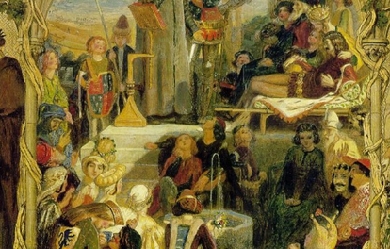
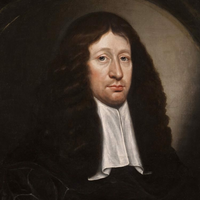
Andrew Marvell (31 March 1621– 16 August 1678) was an English metaphysical poet, satirist and politician who sat in the House of Commons at various times between 1659 and 1678. During the Commonwealth period he was a colleague and friend of John Milton. His poems range from the love-song “To His Coy Mistress”, to evocations of an aristocratic country house and garden in “Upon Appleton House” and “The Garden”, the political address “An Horatian Ode upon Cromwell’s Return from Ireland”, and the later personal and political satires “Flecknoe” and “The Character of Holland”. Early life Marvell was born in Winestead-in-Holderness, East Riding of Yorkshire, near the city of Kingston upon Hull, the son of a Church of England clergyman also named Andrew Marvell. The family moved to Hull when his father was appointed Lecturer at Holy Trinity Church there, and Marvell was educated at Hull Grammar School. A secondary school in the city, the Andrew Marvell Business and Enterprise College, is now named after him. At the age of 13, Marvell attended Trinity College, Cambridge and eventually received a BA degree. A portrait of Marvell attributed to Godfrey Kneller hangs in Trinity College’s collection. Afterwards, from the middle of 1642 onwards, Marvell probably travelled in continental Europe. He may well have served as a tutor for an aristocrat on the Grand Tour, but the facts are not clear on this point. While England was embroiled in the civil war, Marvell seems to have remained on the continent until 1647. It is not known exactly where his travels took him, except that he was in Rome in 1645 and Milton later reported that Marvell had mastered four languages, including French, Italian and Spanish. First poems and Marvell’s time at Nun Appleton Marvell’s first poems, which were written in Latin and Greek and published when he was still at Cambridge, lamented a visitation of the plague and celebrated the birth of a child to King Charles I and Queen Henrietta Maria. He only belatedly became sympathetic to the successive regimes during the Interregnum after Charles I’s execution on 30 January 1649. His “Horatian Ode”, a political poem dated to early 1650, responds with lament to the regicide even as it praises Oliver Cromwell’s return from Ireland. Circa 1650–52, Marvell served as tutor to the daughter of the Lord General Thomas Fairfax, who had recently relinquished command of the Parliamentary army to Cromwell. He lived during that time at Nun Appleton Hall, near York, where he continued to write poetry. One poem, “Upon Appleton House, To My Lord Fairfax”, uses a description of the estate as a way of exploring Fairfax’s and Marvell’s own situation in a time of war and political change. Probably the best-known poem he wrote at this time is “To His Coy Mistress”. Anglo-Dutch War and employment as Latin secretary During the period of increasing tensions leading up to the First Anglo-Dutch War of 1653, Marvell wrote the satirical “Character of Holland,” repeating the then current stereotype of the Dutch as “drunken and profane”: "This indigested vomit of the Sea,/ Fell to the Dutch by Just Propriety.” He became a tutor to Cromwell’s ward, William Dutton, in 1653, and moved to live with his pupil at the house of John Oxenbridge in Eton. Oxenbridge had made two trips to Bermuda, and it is thought that this inspired Marvell to write his poem Bermudas. He also wrote several poems in praise of Cromwell, who was by this time Lord Protector of England. In 1656 Marvell and Dutton travelled to France, to visit the Protestant Academy of Saumur. In 1657, Marvell joined Milton, who by that time had lost his sight, in service as Latin secretary to Cromwell’s Council of State at a salary of £200 a year, which represented financial security at that time. Oliver Cromwell died in 1658. He was succeeded as Lord Protector by his son Richard. In 1659 Marvell was elected Member of Parliament for Kingston-upon-Hull in the Third Protectorate Parliament. He was paid a rate of 6 shillings, 8 pence per day during sittings of parliament, a financial support derived from the contributions of his constituency. He was re-elected MP for Hull in 1660 for the Convention Parliament. After the Restoration The monarchy was restored to Charles II in 1660. Marvell avoided punishment for his own co-operation with republicanism, and he helped convince the government of Charles II not to execute John Milton for his antimonarchical writings and revolutionary activities. The closeness of the relationship between the two former colleagues is indicated by the fact that Marvell contributed an eloquent prefatory poem, entitled “On Mr. Milton’s Paradise Lost”, to the second edition of Milton’s epic Paradise Lost. According to a biographer: “Skilled in the arts of self-preservation, he was not a toady.” In 1661 Marvell was re-elected MP for Hull in the Cavalier Parliament. He eventually came to write several long and bitterly satirical verses against the corruption of the court. Although circulated in manuscript form, some finding anonymous publication in print, they were too politically sensitive and thus dangerous to be published under his name until well after his death. Marvell took up opposition to the 'court party’, and satirised them anonymously. In his longest verse satire, Last Instructions to a Painter, written in 1667, Marvell responded to the political corruption that had contributed to English failures during the Second Anglo-Dutch War. The poem did not find print publication until after the Revolution of 1688–9. The poem instructs an imaginary painter how to picture the state without a proper navy to defend them, led by men without intelligence or courage, a corrupt and dissolute court, and dishonest officials. Of another such satire, Samuel Pepys, himself a government official, commented in his diary, “Here I met with a fourth Advice to a Painter upon the coming in of the Dutch and the End of the War, that made my heart ake to read, it being too sharp and so true.” From 1659 until his death in 1678, Marvell was serving as London agent for the Hull Trinity House, a shipmasters’ guild. He went on two missions to the continent, one to the Dutch Republic and the other encompassing Russia, Sweden, and Denmark. He spent some time living in a cottage on Highgate Hill in north London, where his time in the area is recorded by a bronze plaque that bears the following inscription: Four feet below this spot is the stone step, formerly the entrance to the cottage in which lived Andrew Marvell, poet, wit, and satirist; colleague with John Milton in the foreign or Latin secretaryship during the Commonwealth; and for about twenty years M.P. for Hull. Born at Winestead, Yorkshire, 31st March, 1621, died in London, 18th August, 1678, and buried in the church of St. Giles-in-the-Fields. This memorial is placed here by the London County Council, December, 1898. A floral sundial in the nearby Lauderdale House bears an inscription quoting lines from of his poem “The Garden”. He died suddenly in 1678, while in attendance at a popular meeting of his old constituents at Hull. His health had previously been remarkably good; and it was supposed by many that he was poisoned by some of his political or clerical enemies. Marvell was buried in the church of St Giles in the Fields in central London. His monument, erected by his grateful constituency, bears the following inscription: Near this place lyeth the body of Andrew Marvell, Esq., a man so endowed by Nature, so improved by Education, Study, and Travel, so consummated by Experience, that, joining the peculiar graces of Wit and Learning, with a singular penetration and strength of judgment; and exercising all these in the whole course of his life, with an unutterable steadiness in the ways of Virtue, he became the ornament and example of his age, beloved by good men, feared by bad, admired by all, though imitated by few; and scarce paralleled by any. But a Tombstone can neither contain his character, nor is Marble necessary to transmit it to posterity; it is engraved in the minds of this generation, and will be always legible in his inimitable writings, nevertheless. He having served twenty years successfully in Parliament, and that with such Wisdom, Dexterity, and Courage, as becomes a true Patriot, the town of Kingston-upon-Hull, from whence he was deputed to that Assembly, lamenting in his death the public loss, have erected this Monument of their Grief and their Gratitude, 1688. It may be noted that his epitaph pays more tribute to his political career than his poetry. Prose works Marvell also wrote anonymous prose satires criticizing the monarchy and Catholicism, defending Puritan dissenters, and denouncing censorship. The Rehearsal Transpros’d, an attack on Samuel Parker, was published in two parts in 1672 and 1673. In 1676, Mr. Smirke; or The Divine in Mode, a work critical of intolerance within the Church of England, was published together with a “Short Historical Essay, concerning General Councils, Creeds, and Impositions, in matters of Religion.” Marvell’s pamphlet An Account of the Growth of Popery and Arbitrary Government in England, published in late 1677, alleged that: “There has now for diverse Years, a design been carried on, to change the Lawfull Government of England into an Absolute Tyranny, and to convert the established Protestant Religion into down-right Popery”. John Kenyon described it as “one of the most influential pamphlets of the decade” and G. M. Trevelyan called it: “A fine pamphlet, which throws light on causes provocative of the formation of the Whig party”. A 1678 work published anonymously ("by a Protestant") in defense of John Howe against the attack of his fellow-dissenter, the severe Calvinist Thomas Danson, is also probably by Marvell. Its full title is Remarks upon a late disingenuous discourse, writ by one T.D. under the pretence de causa Dei, and of answering Mr. John Howe’s letter and postscript of God’s prescience, &c., affirming, as the Protestant docrine, that GOd doth by efficacious influence universally move and determine men to all their actions, even to those that are most wicked. Views Although Marvell became a Parliamentarian, he was not a Puritan. He had flirted briefly with Catholicism as a youth, and was described in his thirties (on the Saumur visit) as “a notable English Italo-Machiavellian”. During his lifetime, his prose satires were much better known than his verse. Vincent Palmieri noted that Marvell is sometimes known as the “British Aristides” for his incorruptible integrity in life and poverty at death. Many of his poems were not published until 1681, three years after his death, from a collection owned by Mary Palmer, his housekeeper. After Marvell’s death she laid dubious claim to having been his wife, from the time of a secret marriage in 1667. Marvell’s poetic style T. S. Eliot wrote of Marvell’s style that 'It is more than a technical accomplishment, or the vocabulary and syntax of an epoch; it is, what we have designated tentatively as wit, a tough reasonableness beneath the slight lyric grace’. He also identified Marvell and the metaphysical school with the 'dissociation of sensibility’ that occurred in 17th-century English literature; Eliot described this trend as 'something which... happened to the mind of England... it is the difference between the intellectual poet and the reflective poet’. Poets increasingly developed a self-conscious relationship to tradition, which took the form of a new emphasis on craftsmanship of expression and an idiosyncratic freedom in allusions to Classical and Biblical sources. Marvell’s most celebrated lyric, “To His Coy Mistress”, combines an old poetic conceit (the persuasion of the speaker’s lover by means of a carpe diem philosophy) with Marvell’s typically vibrant imagery and easy command of rhyming couplets. Other works incorporate topical satire and religious themes. References Wikipedia—https://en.wikipedia.org/wiki/Andrew_Marvell

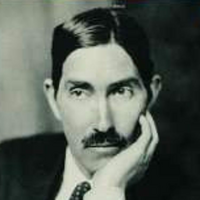
Harold Edward Monro (14 March 1879– 16 March 1932) was an English poet born in Brussels and proprietor of the Poetry Bookshop in London, which helped many poets bring their work before the public. Life and career Monro was born at 137 chaussée de Charleroi, Saint-Gilles/St Gillis, Brussels, on 14 March 1879, youngest of three surviving children of Edward William Monro (1848–1889), civil engineer, and his wife and first cousin, Arabel Sophia (1849–1926), daughter of Peter John Margary, also a civil engineer. Monro’s father was born at Marylebone and died aged 41 when Monro was only nine years old. This loss may have influenced his character as a poet. The Monro family was well established in Bloomsbury. His paternal grandfather, Dr. Henry Munro FRCP MD, was a surgeon, born at Gower St, Bloomsbury, in 1817. Monro was educated at Radley College and at Caius College, Cambridge. His first collection of poetry was published in 1906. He also edited a poetry magazine, The Poetry Review, which became influential. In 1913, he founded the Poetry Bookshop at 35 Devonshire Street in Bloomsbury, where he published new collections at his own expense and sometimes made a profit, while providing a welcoming environment for readers and poets. Several poets, including [[Wilfrid Gibson]], lodged in the rooms above the shop. Monro and the Poetry Bookshop were also involved with Edward Marsh in publishing the Georgian Poetry series. War and peace Monro wrote few war poems himself, but his “Youth in Arms” quartet, written in the early months, is one of the first attempts to envisage the “human psychology” of soldiering and understand “how ungrudgingly Youth dies.” These poems were inspired by Monro’s fears for his friend, Basil Watt, whom he dearly loved and who was later killed at Loos. Monro’s moving elegy for Watt, "Lament in 1915", is a monologue in unornamented, modern language. Happy boy, happy boy, David the immortal-willed, Youth a thousand thousand times Slain, but not once killed, Swaggering again today In the old contemptuous way; Leaning backward from your thigh Up against the tinselled bar — Dust and ashes! is it you? Laughing, boasting, there you are! First we hardly recognized you In your modern avatar. Soldier, rifle, brown khaki — Is your blood as happy so? Where’s your sling or painted shield, Helmet, pike or bow? Well, you’re going to the wars — That is all you need to know. Graybeards plotted. They were sad. Death was in their wrinkled eyes. At their tables—with their maps, Plans and calculations—wise They all seemed; for well they knew How ungrudgingly Youth dies. At their green official baize They debated all the night Plans for your adventurous days Which you followed with delight, Youth in all your wanderings, David of a thousand slings. After the war, Monro wrote his somewhat trenchant overview Some Contemporary Poets (1920) (though this was not published by the Poetry Bookshop). He also founded The Chapbook (1919–25, his third journal after The Poetry Review and Poetry and Drama, 1913–14), which was not commercially viable, but contained some of his best work as a poet. His intention was to find “cultural middle ground” between modernism and the more traditional work exemplified by the Georgians. In this Monro took a broad view of the sphere of poetry, devoting whole numbers to children’s rhymes and to songs by Walter de la Mare complete with scores. Marriages The young Monro was raised together with his sister Mary (d. 1921) by their widowed mother, who remarried in 1910 to Sir Daniel Fulthorpe Gooch (1829–1926). Monro’s stepbrother Lancelot Daniel Edward Gooch, a midshipman on H.M.S. Implacable, died a fortnight after his 18th birthday in Greece, on 4 October 1915. On 2 December 1903 in Ireland, Monro married Dorothy Elizabeth Browne. Their son Nigel Monro (1904–1951) was born there in 1904 but the marriage was not to last and in 1908, they separated. His son followed Monro family medical tradition and practised as a surgeon. In March 1913 he met Alida Klemantaski, 17 years his junior, from Hampstead, who also had a passion for poetry and had set herself goals of becoming a doctor or rescuing prostitutes from their predicament. Monro instead persuaded her that by working in the Poetry Bookshop, she would be achieving just as much for society. They were married in 1920. Alida’s brother Louis Klemantaski, a promising young poet and musical editor died at the Somme in 1916. It is said that Alida had a greater influence on the development of Monro’s own poetry than any other. Disappointment In his later years, Monro reflected on whether the Poetry Bookshop had fulfilled its purpose and whether it should be closed, but he was too deeply attached to it. According to the English literary historian Dominic Hibberd, “By now Monro was a disappointed man, appalled at the state of Europe and feeling forgotten by the poets he had helped.” He had used up most of his money in subsidizing the shop. On top of a drinking problem, Monro contracted tuberculosis and died on 16 March 1932 aged 53 at the Cliff Combe Nursing Home, Broadstairs, Kent, and was cremated at Golders Green Crematorium on the 19th. He was remembered as being liberal-minded and without literary prejudices. “Perhaps no one did more for the advancement of twentieth-century poetry” (Hibberd again). To what God? On Monday 4 August 2014, a service was held at Westminster Abbey as “A Solemn Commemoration on the Centenary of the Outbreak of the First World War”, HRH Camilla, Duchess of Cornwall, representing HM the Queen. After a reading from St John’s Gospel, the choir gave the first performance of a new composition by David Matthews, a pupil of Benjamin Britten, setting a bitter, disillusioned 1914 poem by Harold Monro, “To what God shall we chant our songs of battle?” alongside passages from Lamentations and St Luke. James O’Donnell, Abbey organist and master of the choristers, commented that the work “leaves you standing on the edge of an abyss.” It was delivered by young men whose voices blasted the stone walls of the abbey like a rebuke. To what God Shall we chant Our songs of Battle? Oh, to whom shall a song of battle be chanted? Not to our lord of the hosts on his ancient throne, Drowsing the ages out in Heaven alone. The celestial choirs are mute, the angels have fled: Word is gone forth abroad that our lord is dead. Is it nothing to you, all you that pass by? Behold and see if there be any sorrow like unto my sorrow. To what God Shall we chant Our songs of Battle? Oh, to whom shall a song of battle be chanted? If you had only recognised on this day the things that make for peace! But now they are hidden from your eyes. Oh, to whom shall a song of battle be chanted? Anthologized poets Poets included in Twentieth Century Poetry, an anthology chosen by Harold Monro, 1933 edition Lascelles Abercrombie– Richard Aldington– John Alford– A. C. Benson– Laurence Binyon– Edmund Blunden– W. S. Blunt– Gordon Bottomley– Robert Bridges– Rupert Brooke– Samuel “Erewhon” Butler– Roy Campbell– G. K. Chesterton– Richard Church– Padraic Colum– A. E. Coppard– Frances Cornford– John Davidson– W. H. Davies– Jeffery Day– Walter de la Mare– Lord Alfred Douglas– John Drinkwater– Helen Parry Eden– T. S. Eliot– Vivian Locke Ellis– Michael Field– J. E. Flecker– F. S. Flint– John Freeman– Stella Gibbons– Wilfrid Gibson– Robert Graves– Thomas Hardy– H. D.– Philip Henderson– Maurice Hewlett– Ralph Hodgson– Gerard Manley Hopkins– A. E. Housman– Ford Madox Hueffer– T. E. Hulme– Aldous Huxley– James Joyce– Rudyard Kipling– D. H. Lawrence– Cecil Day-Lewis– John Masefield– R. A. K. Mason– Charlotte Mew– Alice Meynell– Viola Meynell– Harold Monro– T. Sturge Moore– Edwin Muir– Henry Newbolt– Robert Nichols– Alfred Noyes– Wilfred Owen– J. D. C. Pellow– H. D. C. Pepler– Eden Phillpotts– Ezra Pound– Peter Quennell– Herbert Read– Isaac Rosenberg– Siegfried Sassoon– Geoffrey Scott– Edward Shanks– Fredegond Shove– Edith Sitwell– Osbert Sitwell– Sacheverell Sitwell– Stephen Spender– J. C. Squire– James Stephens– Edward Thomas– W. J. Turner– Sylvia Townsend Warner– Max Weber– Anna Wickham– Humbert Wolfe– William Butler Yeats References Wikipedia—https://en.wikipedia.org/wiki/Harold_Monro
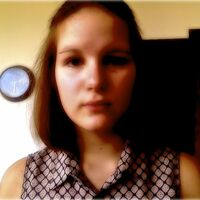
From an early age I've loved poetry and I have sung poems I loved and composed music to fit them. I never quite tried writing though. My mother was always an amazing poet and she wrote me poems every year for my birthday which was the best present I could ask for. As I grew older the magic and wisdom of word pulled me in deeper and one lonely night I tried my hand at poetry. I liked my poems and felt the opinion of others was important.
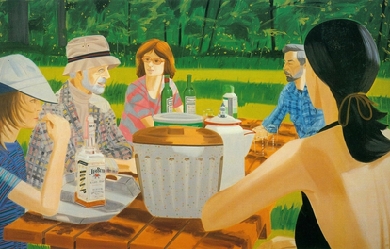
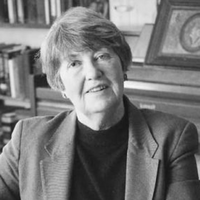
Lisel Mueller was born in Hamburg, Germany, on February 8, 1924 and immigrated to America at the age of 15. She won the U.S. National Book Award in 1981 and the Pulitzer Prize in 1997. Her poems are extremely accessible, yet intricate and layered. While at times whimsical and possessing a sly humor, there is an underlying sadness in much of her work.
I used to keep my feelings bottled up until I started to write You shouldn't feel alone when you're always around people right? But I always do and I really don't know why Letting it out in poems feels better than to cry One day I was in my room and I knew no one would understand me So I grabbed a pen and paper and I felt free I started to jot down what I was feeling All the pain started healing


